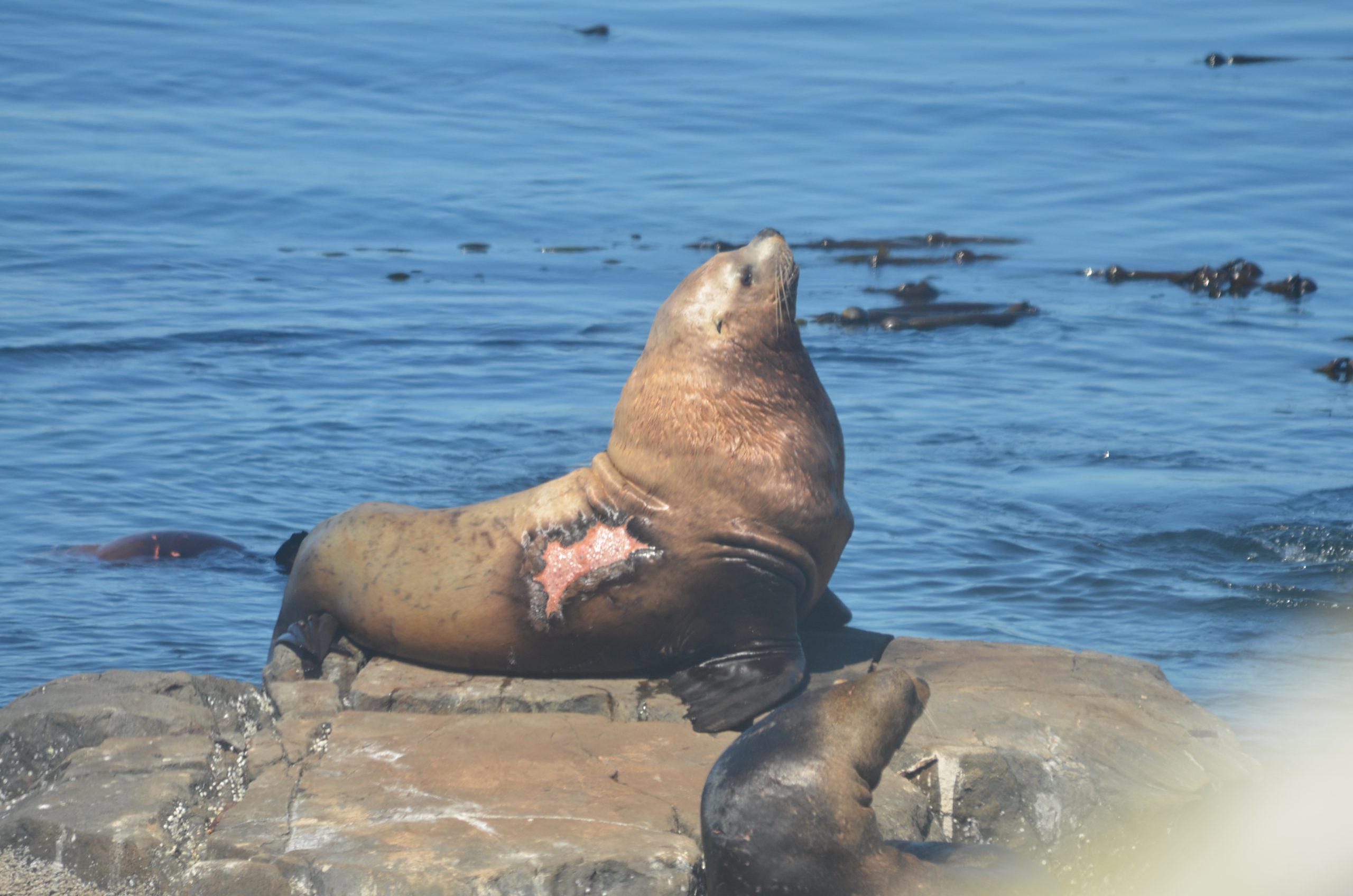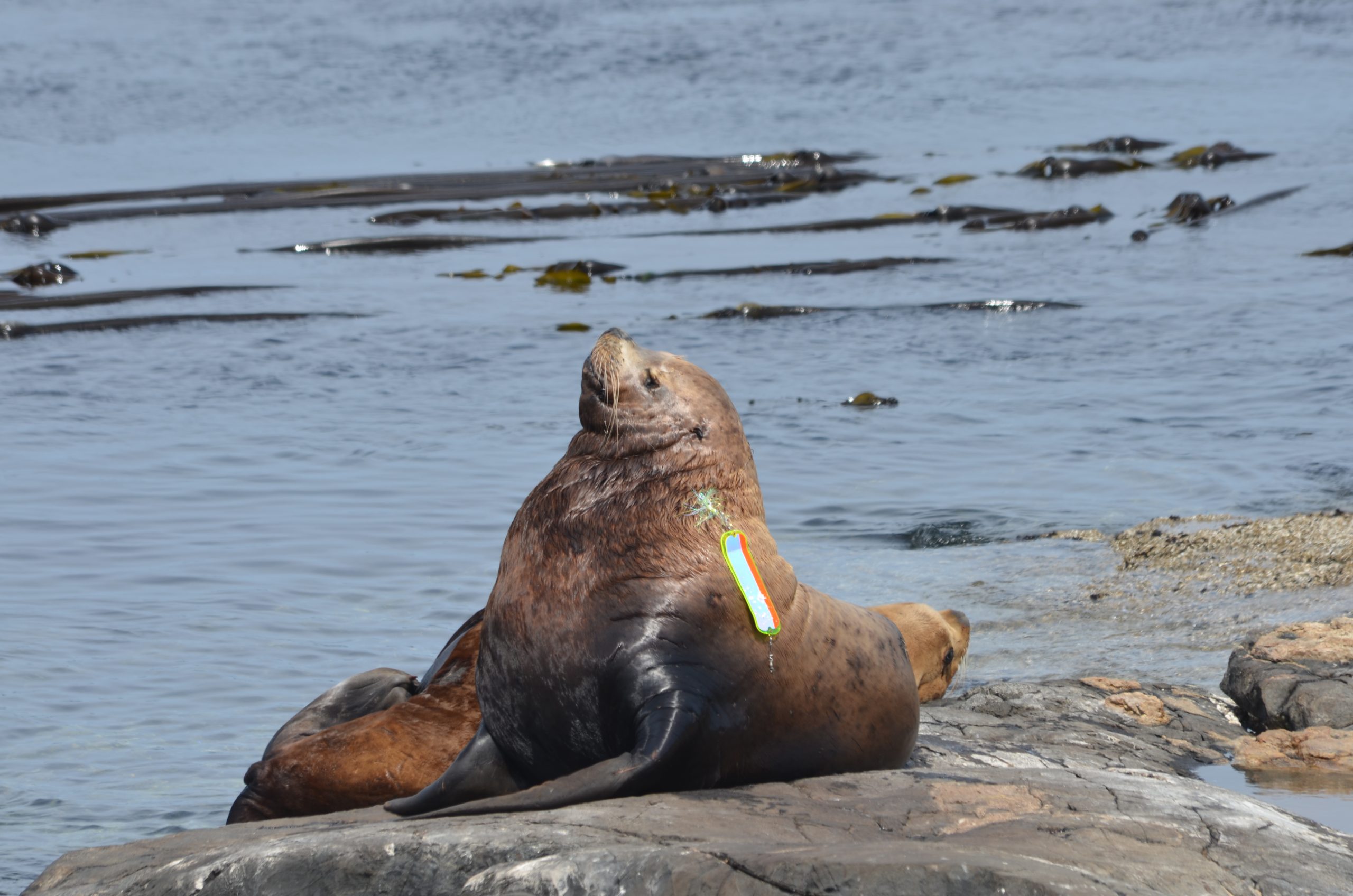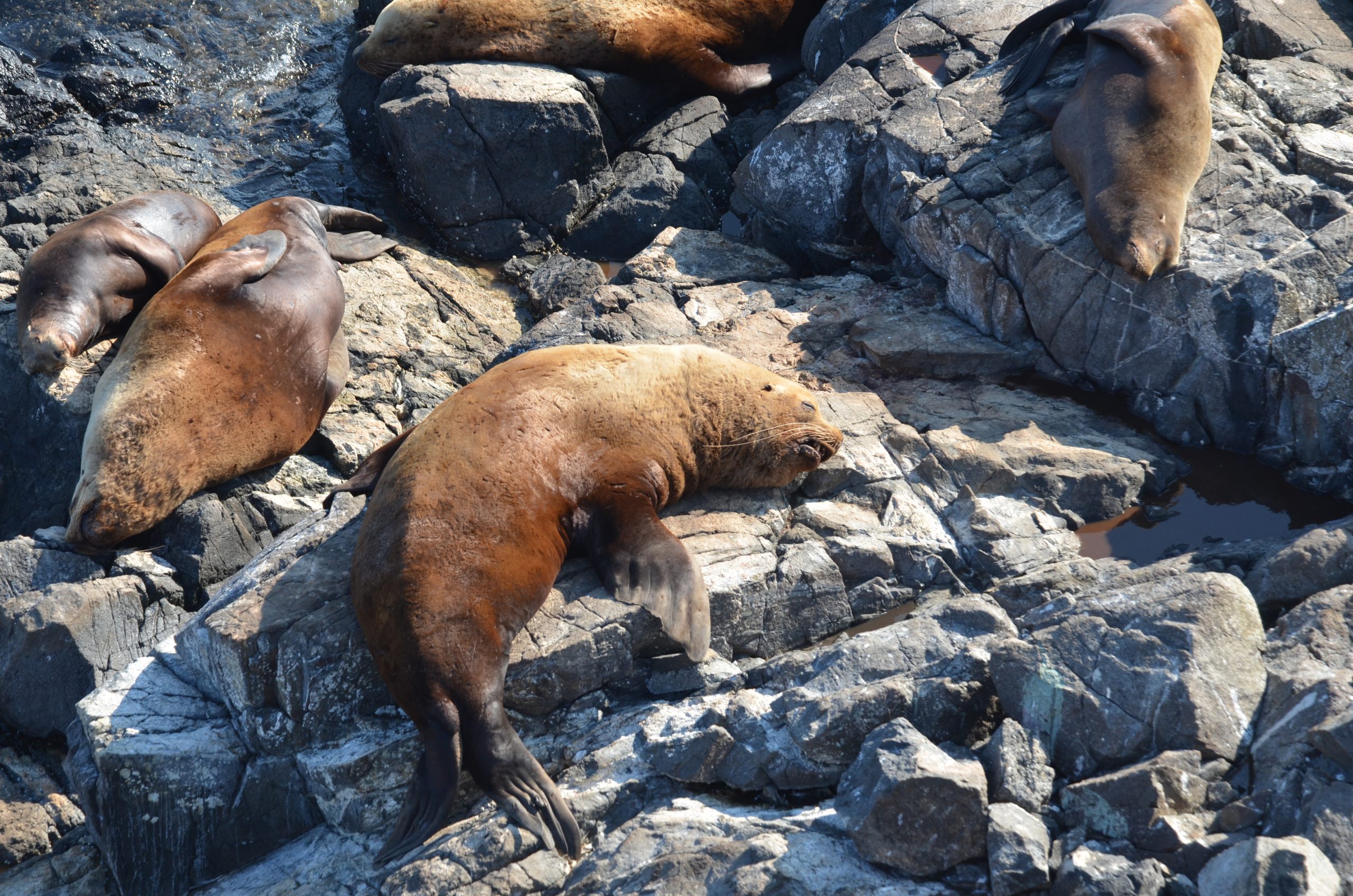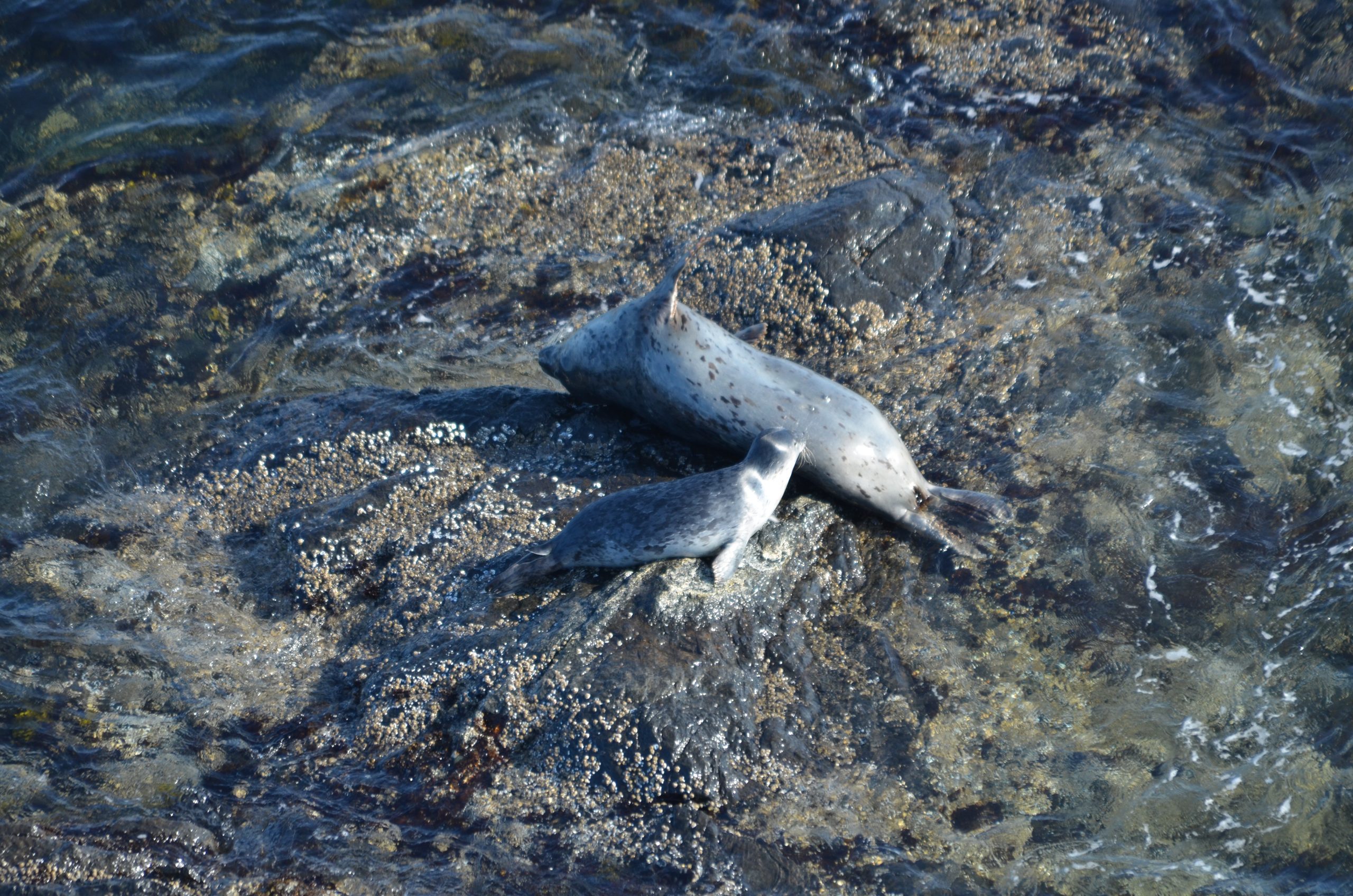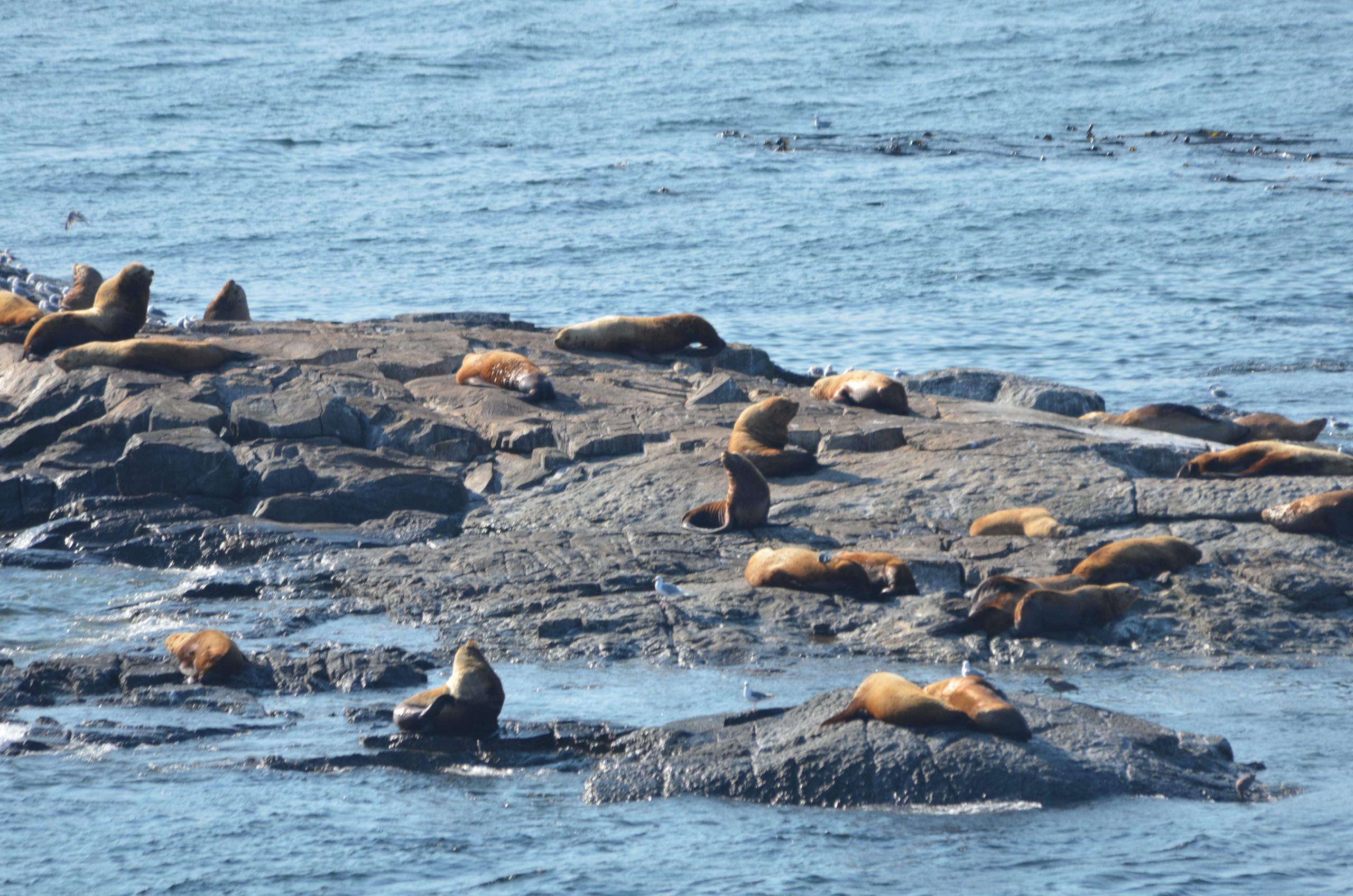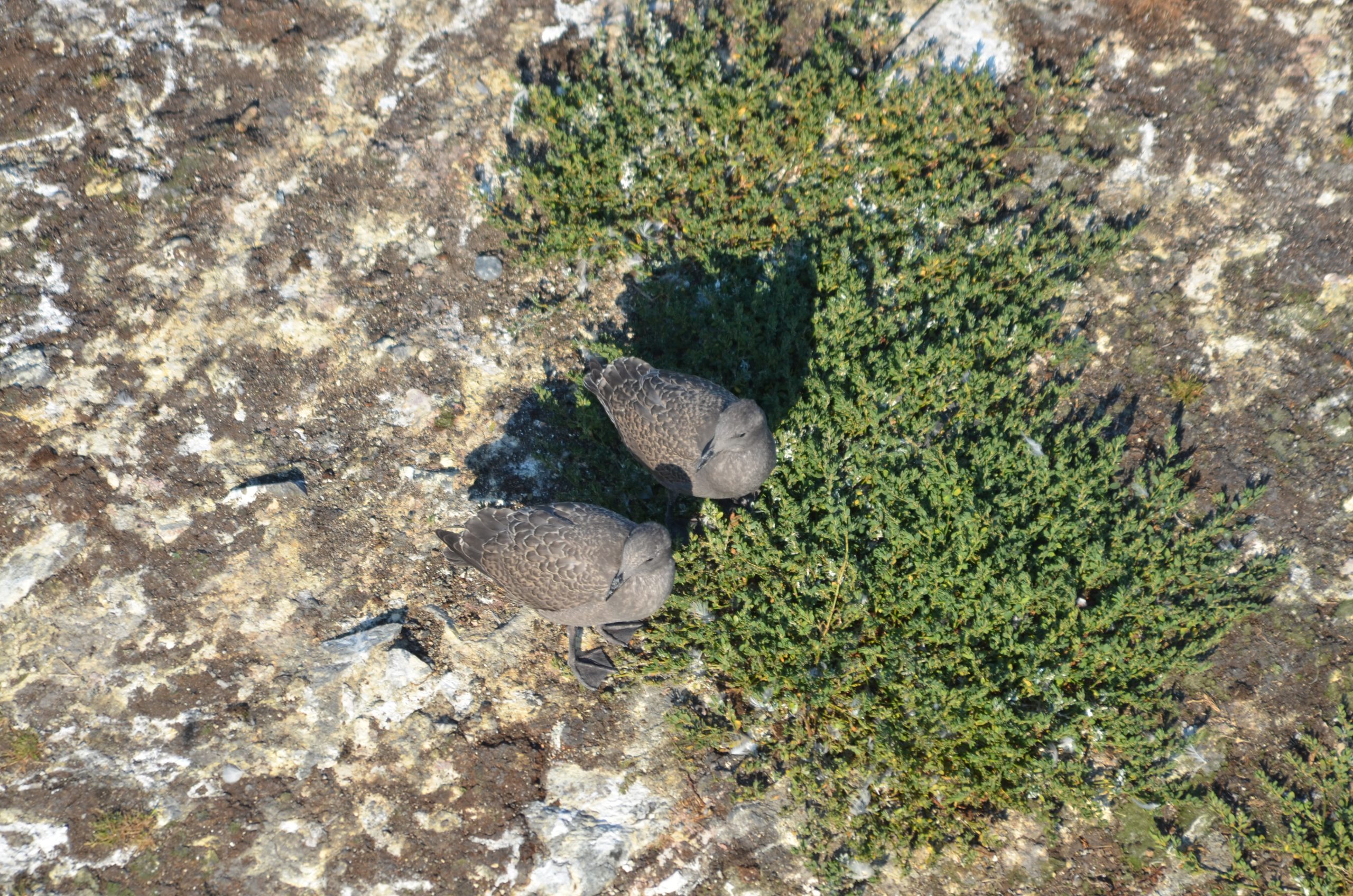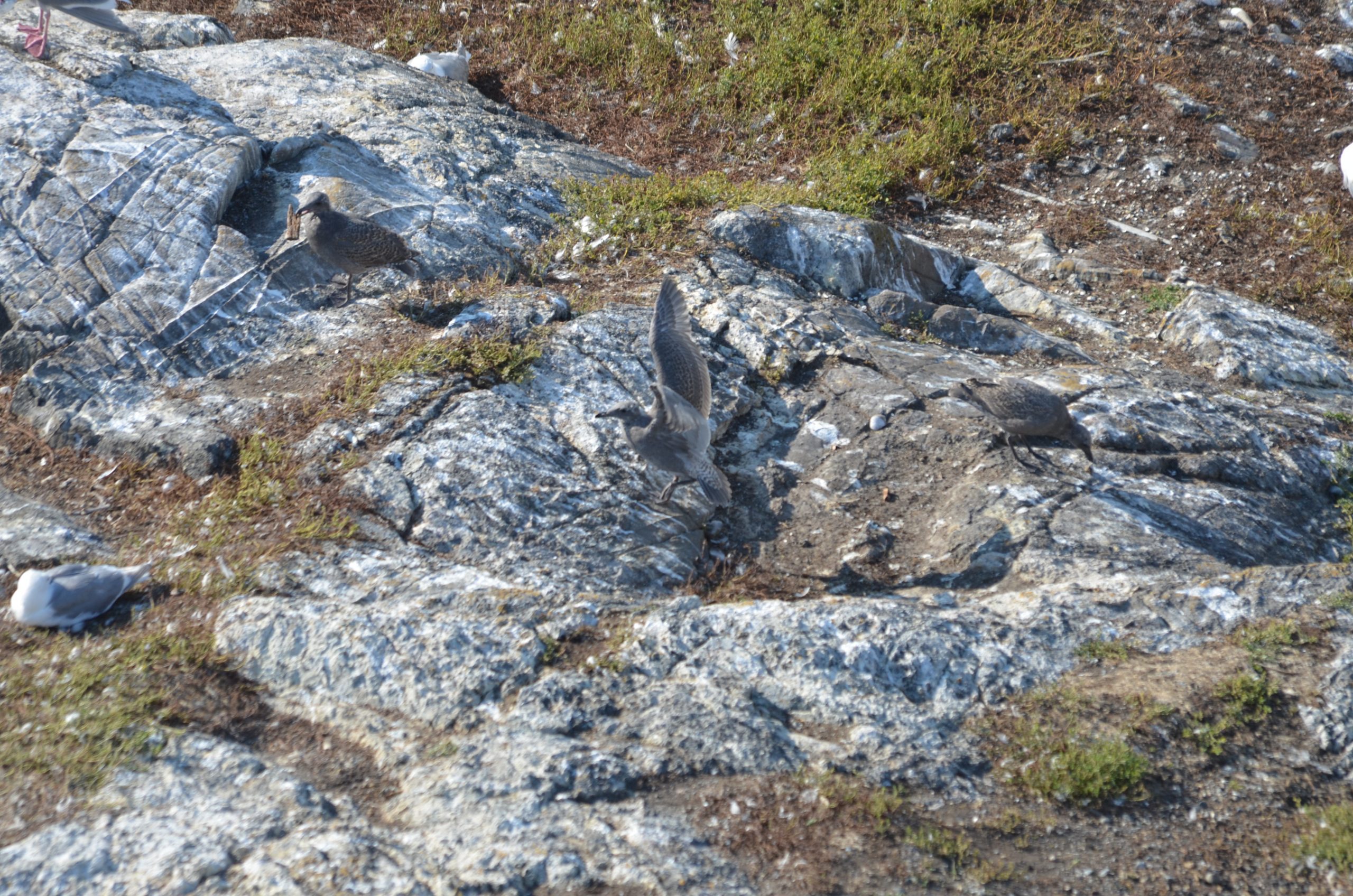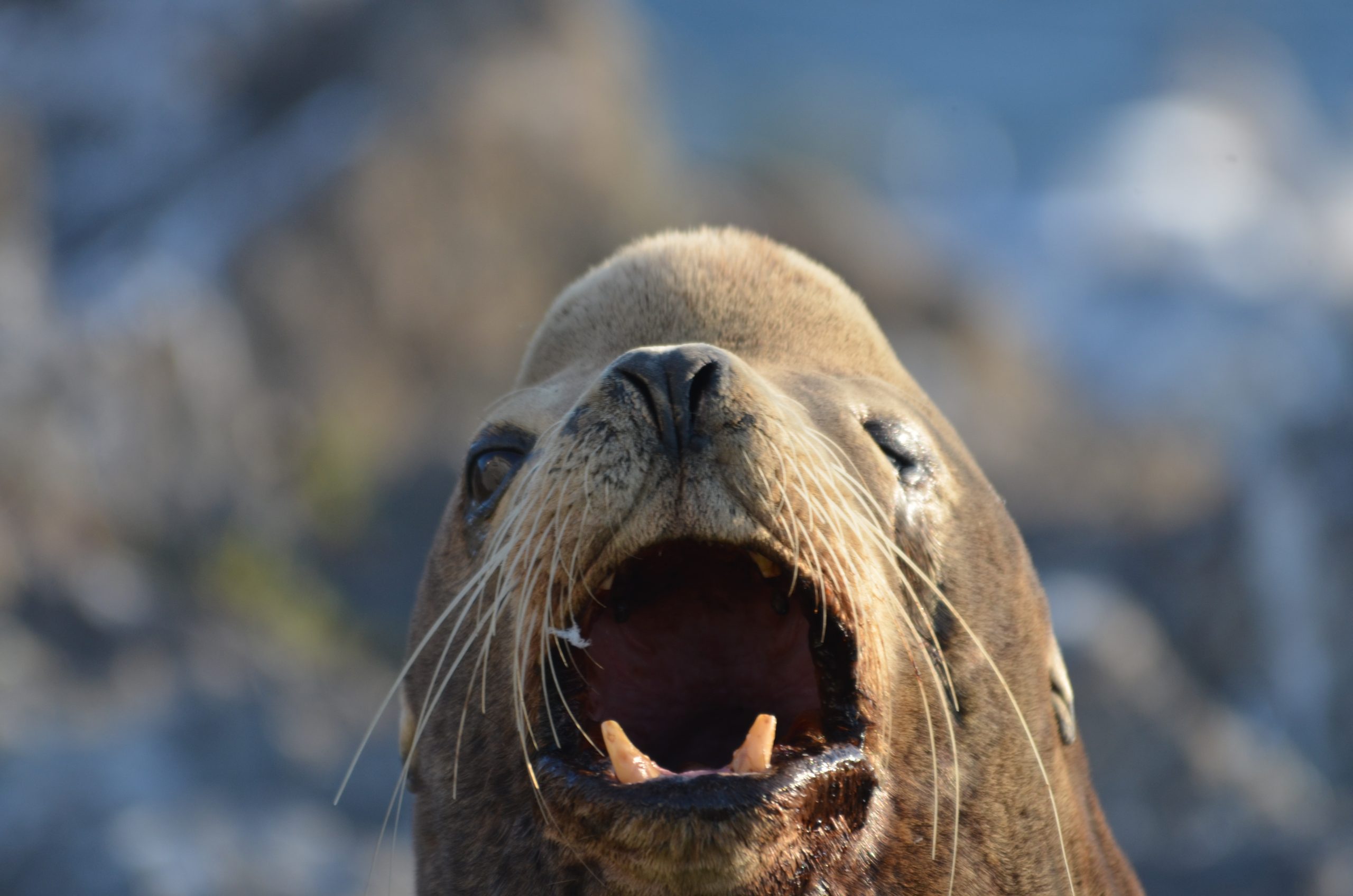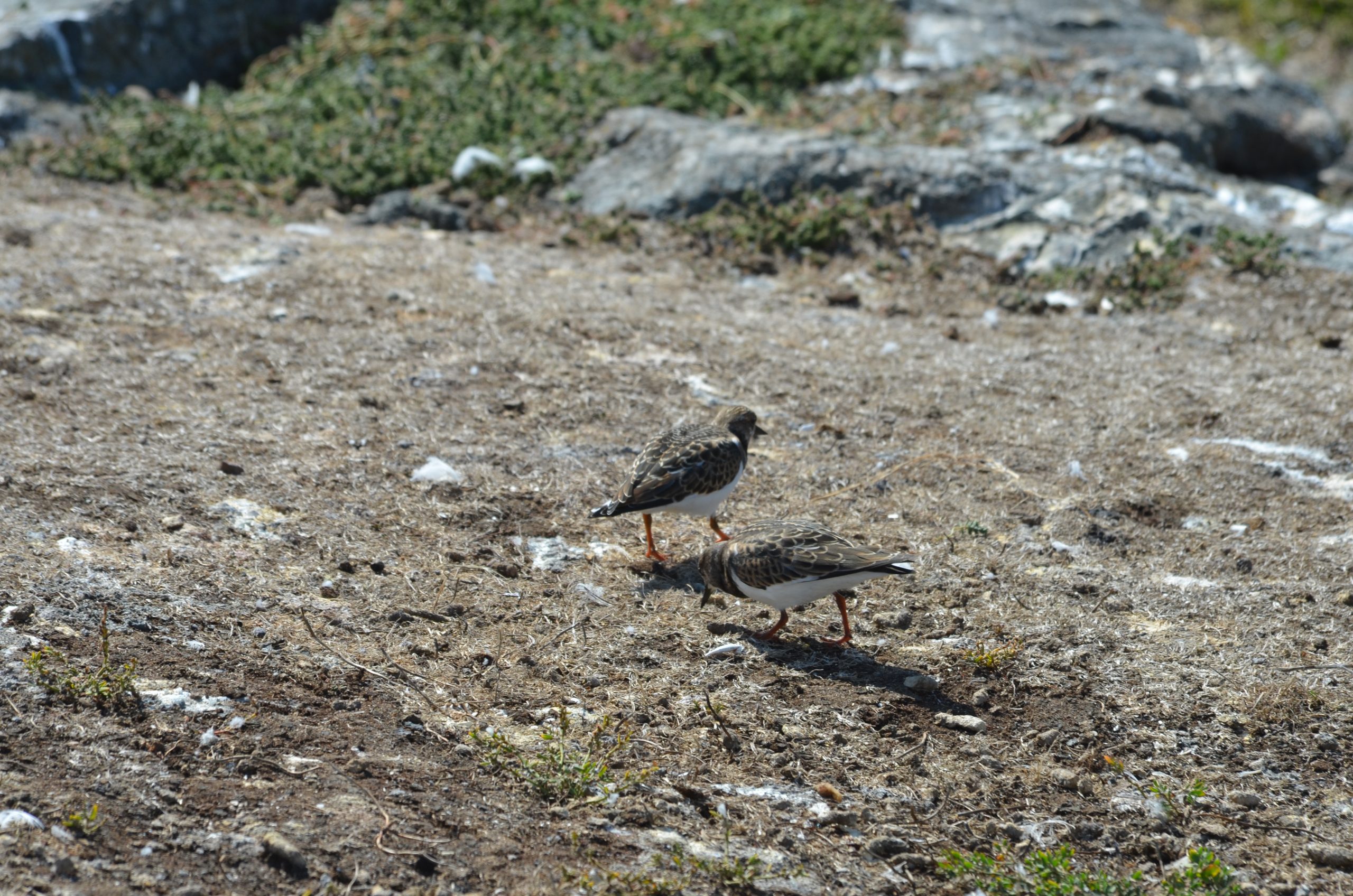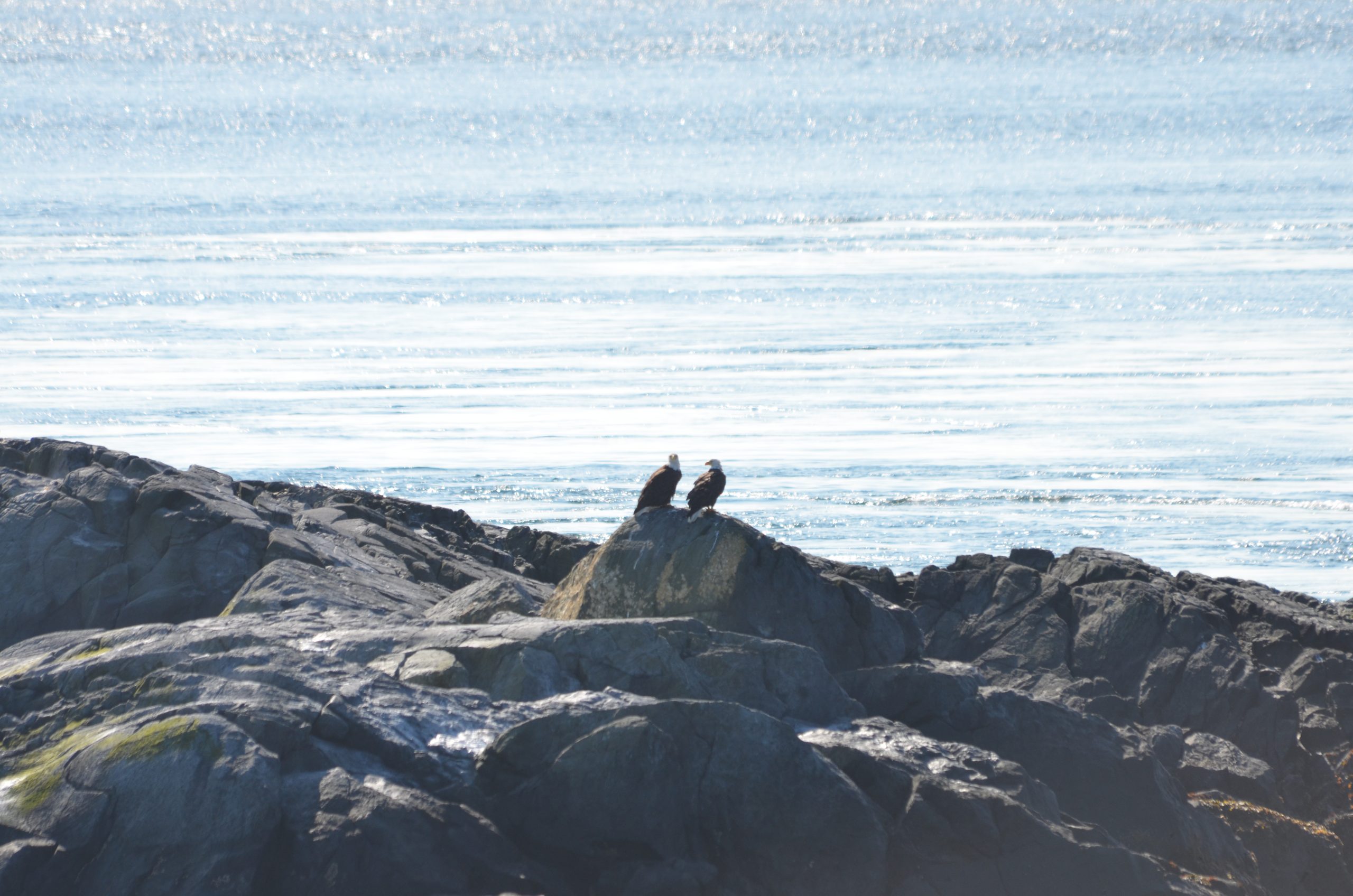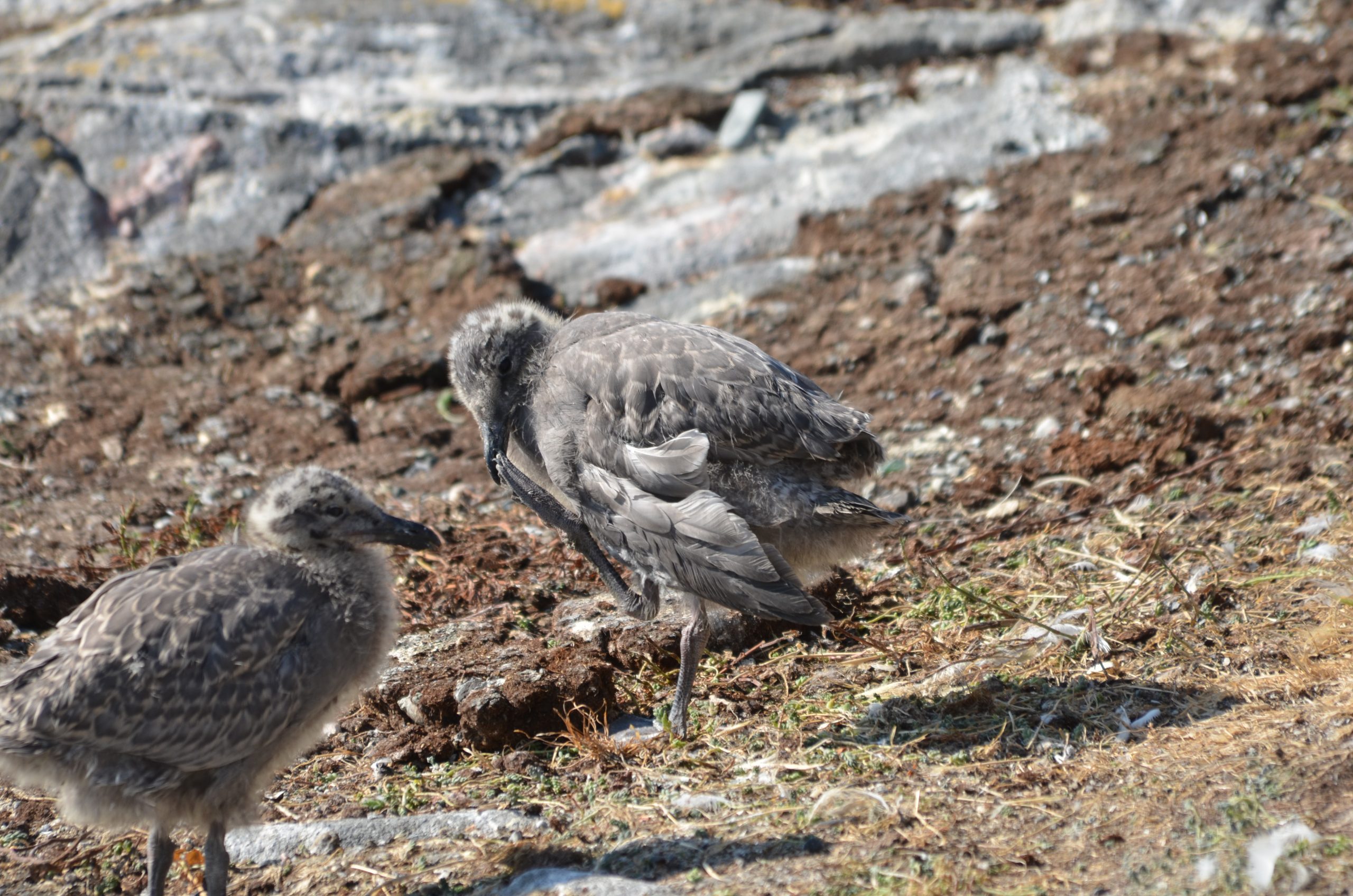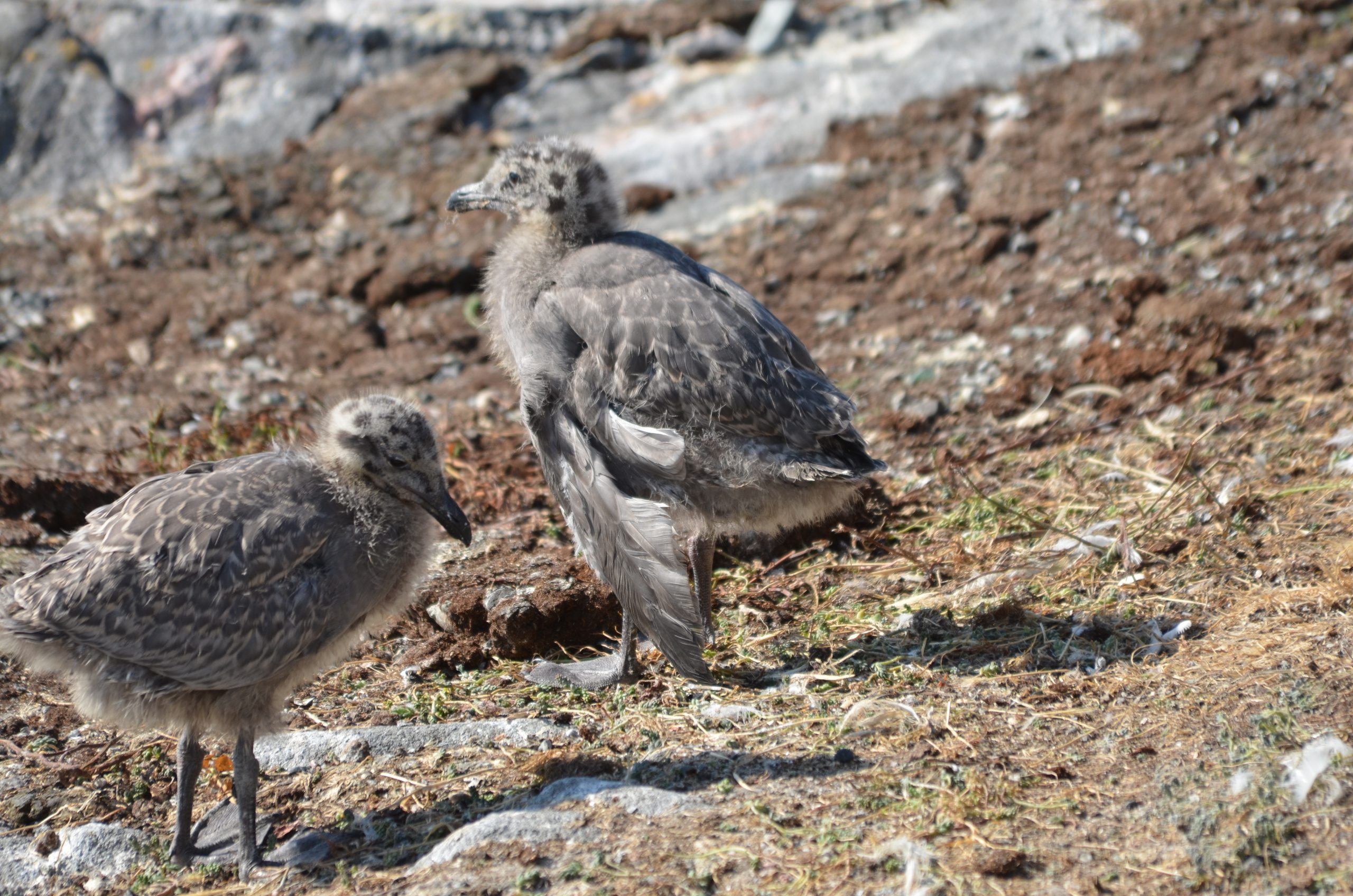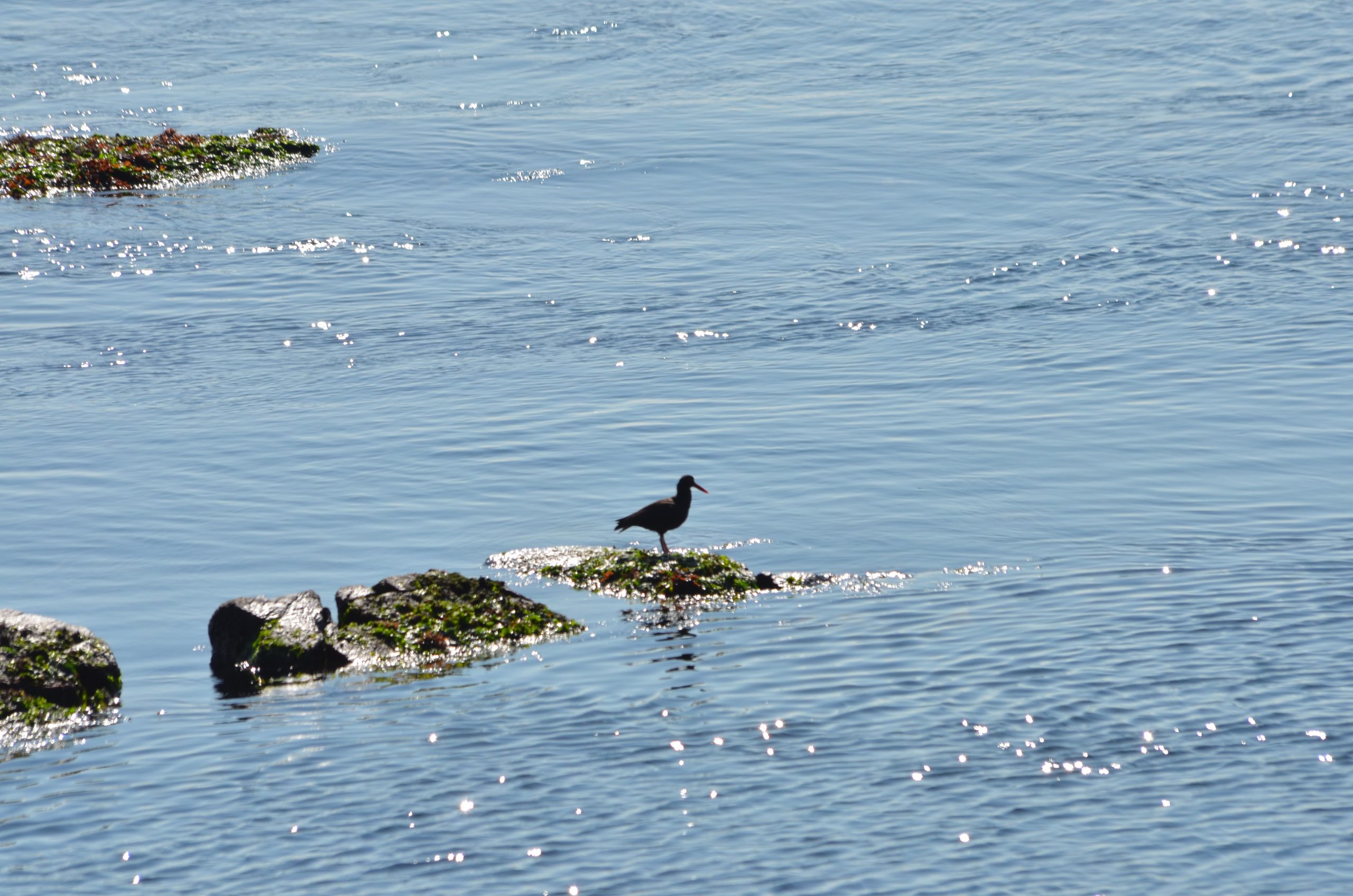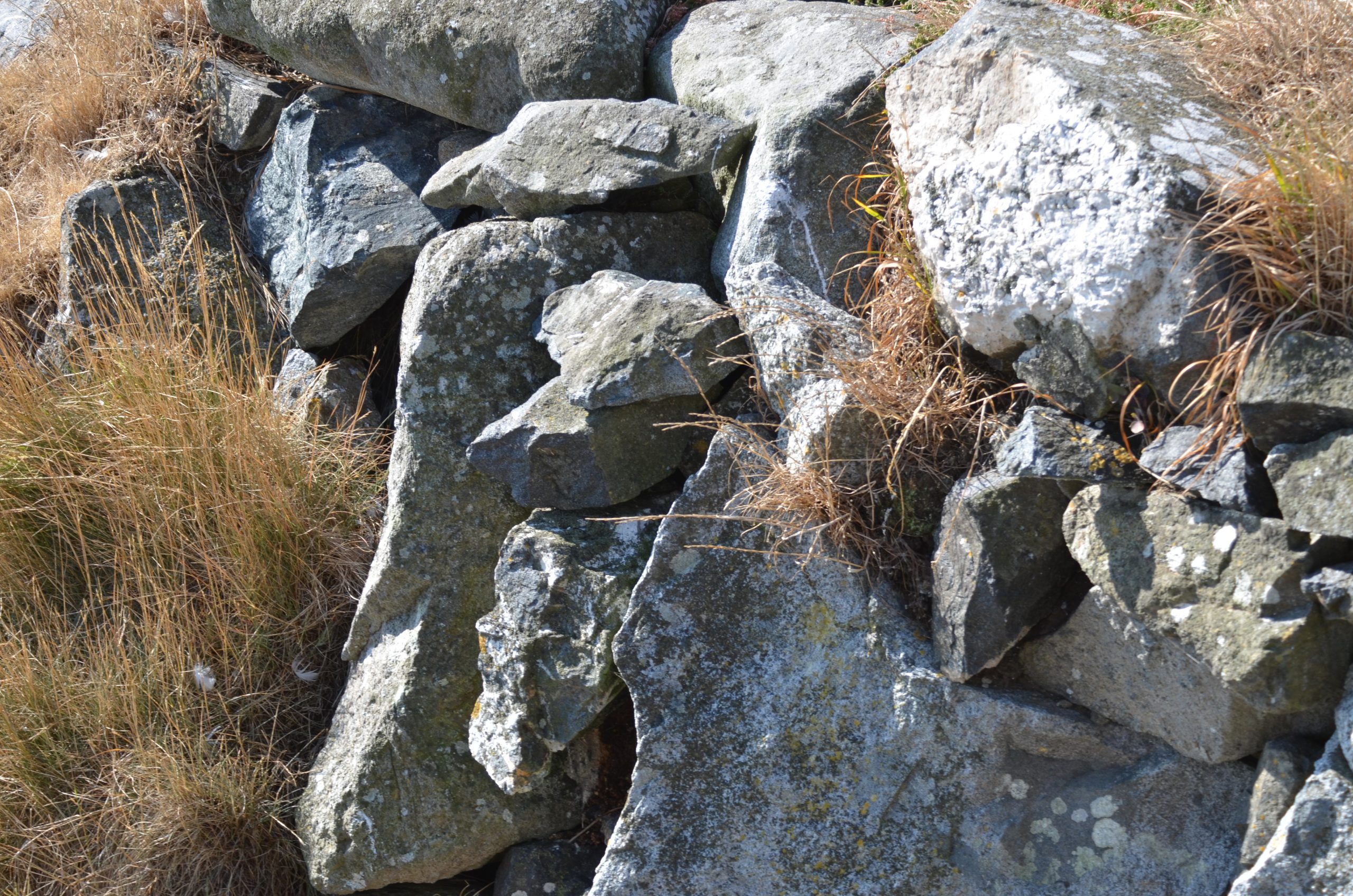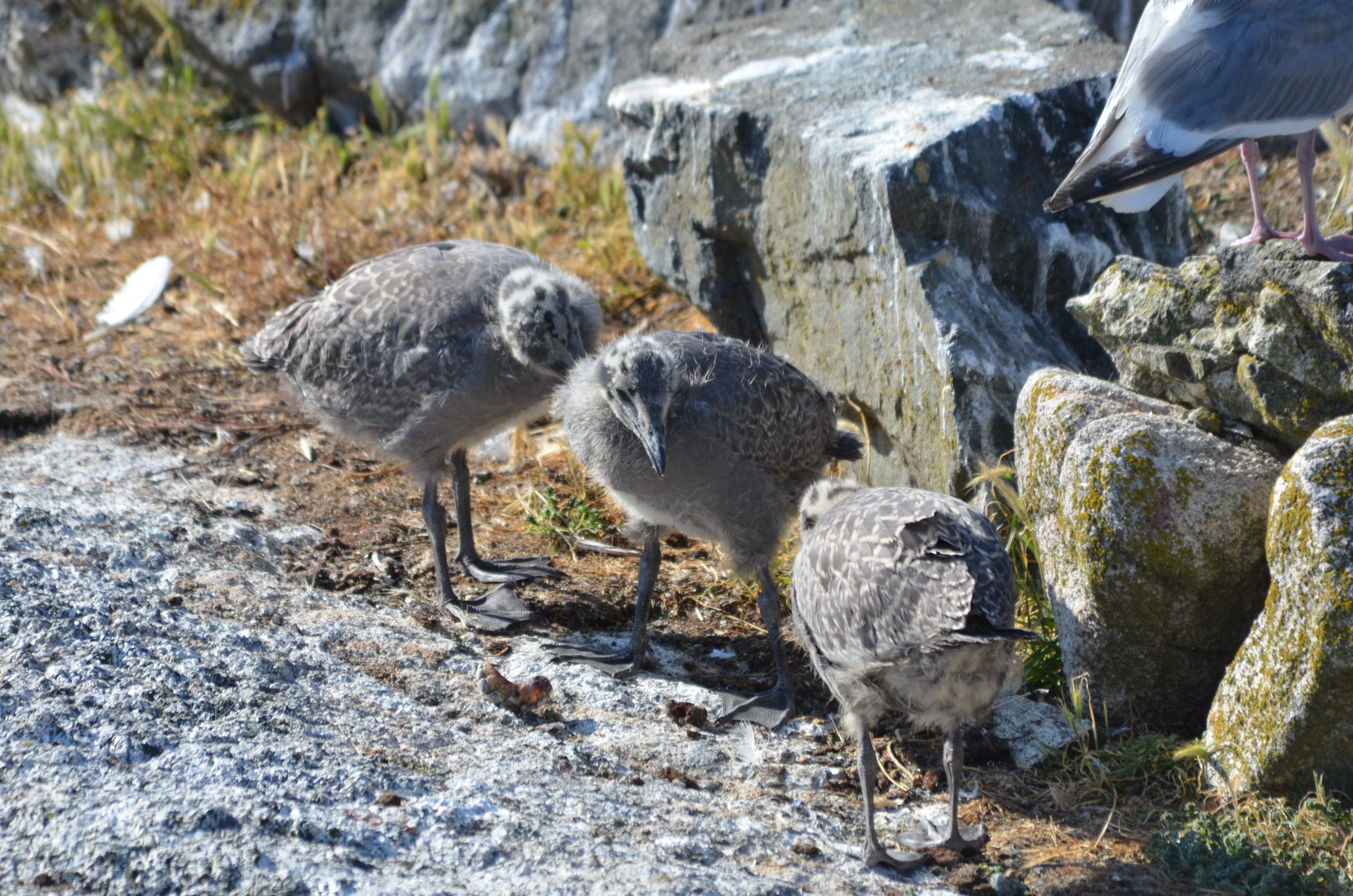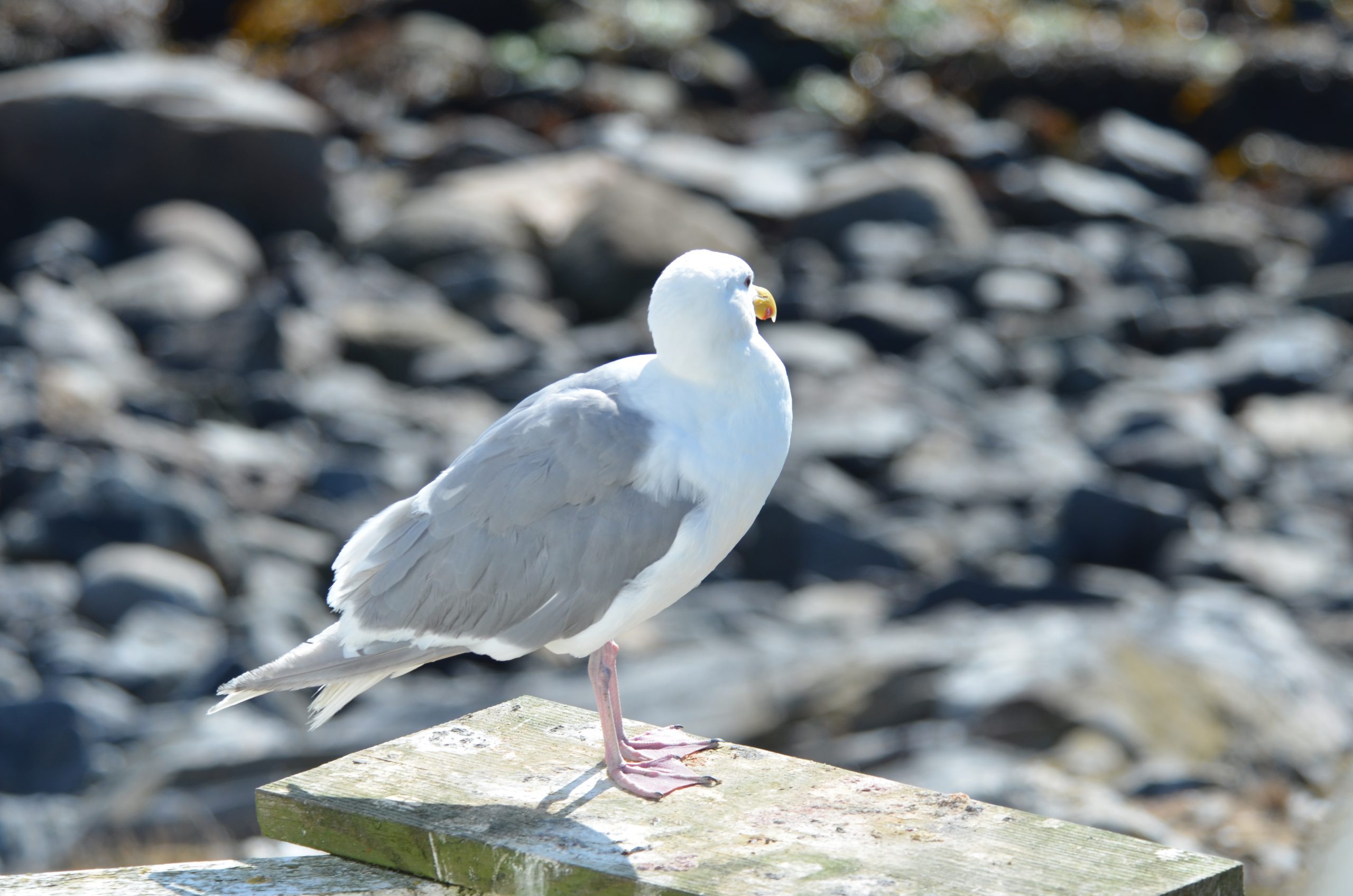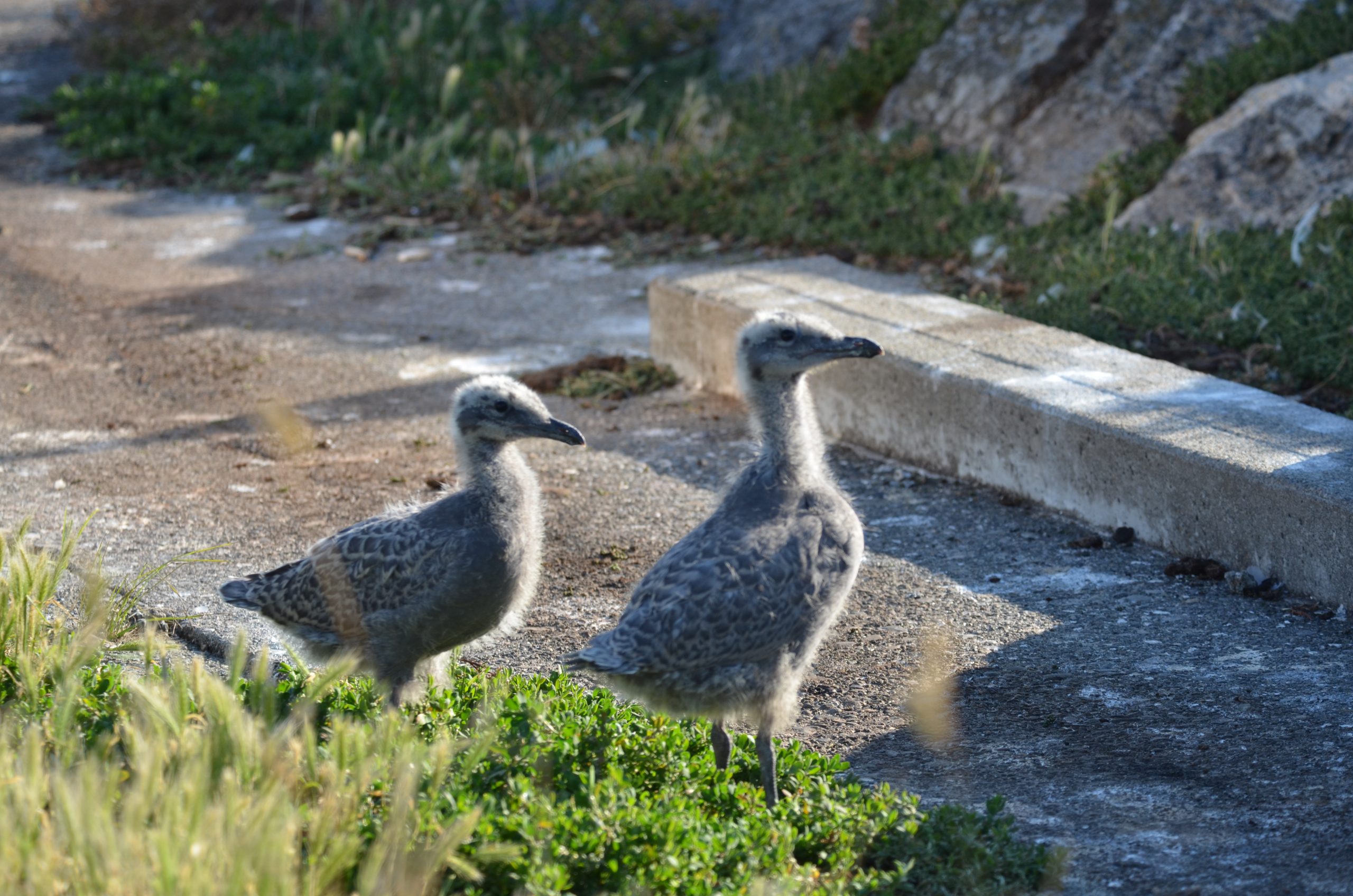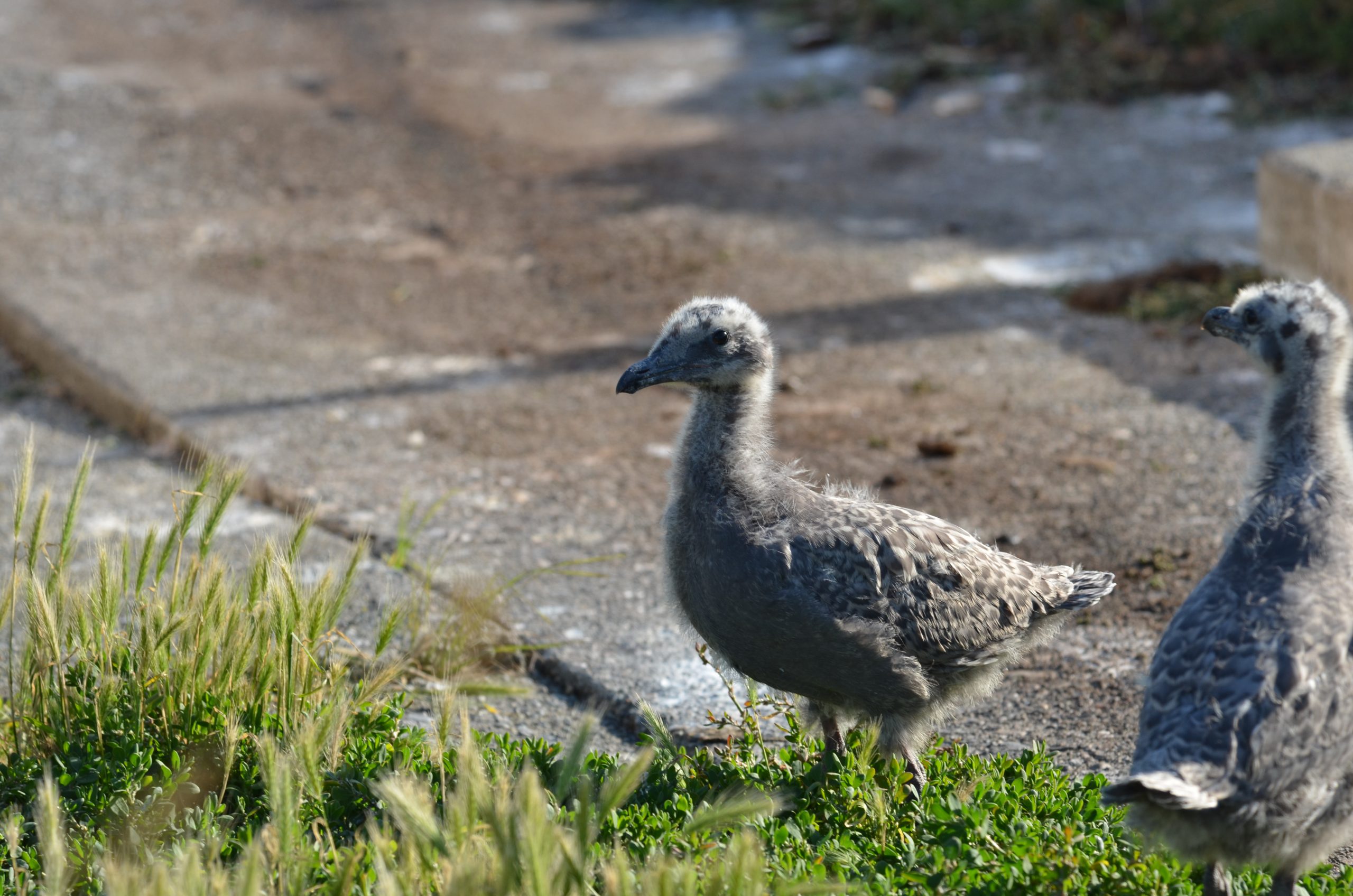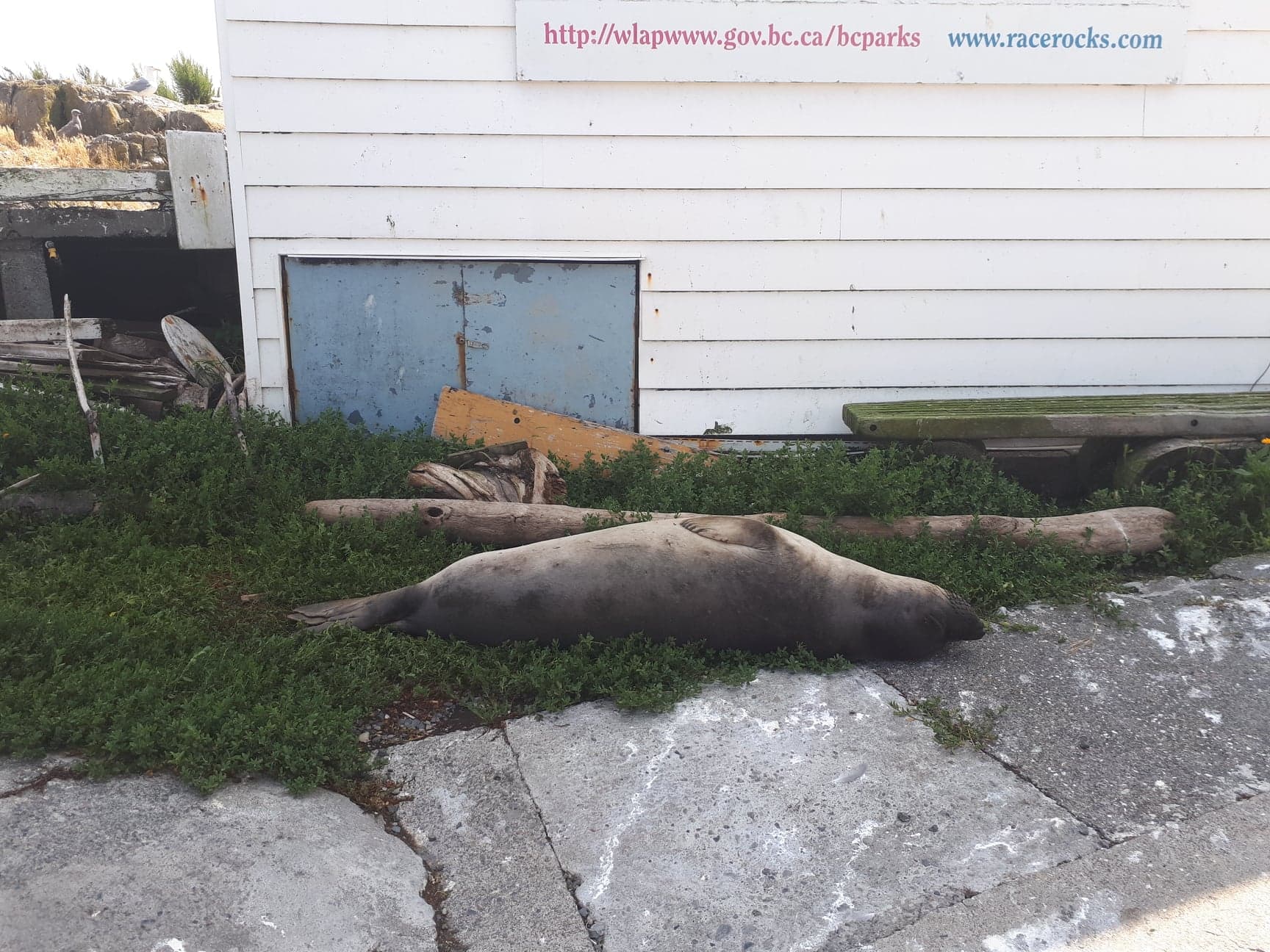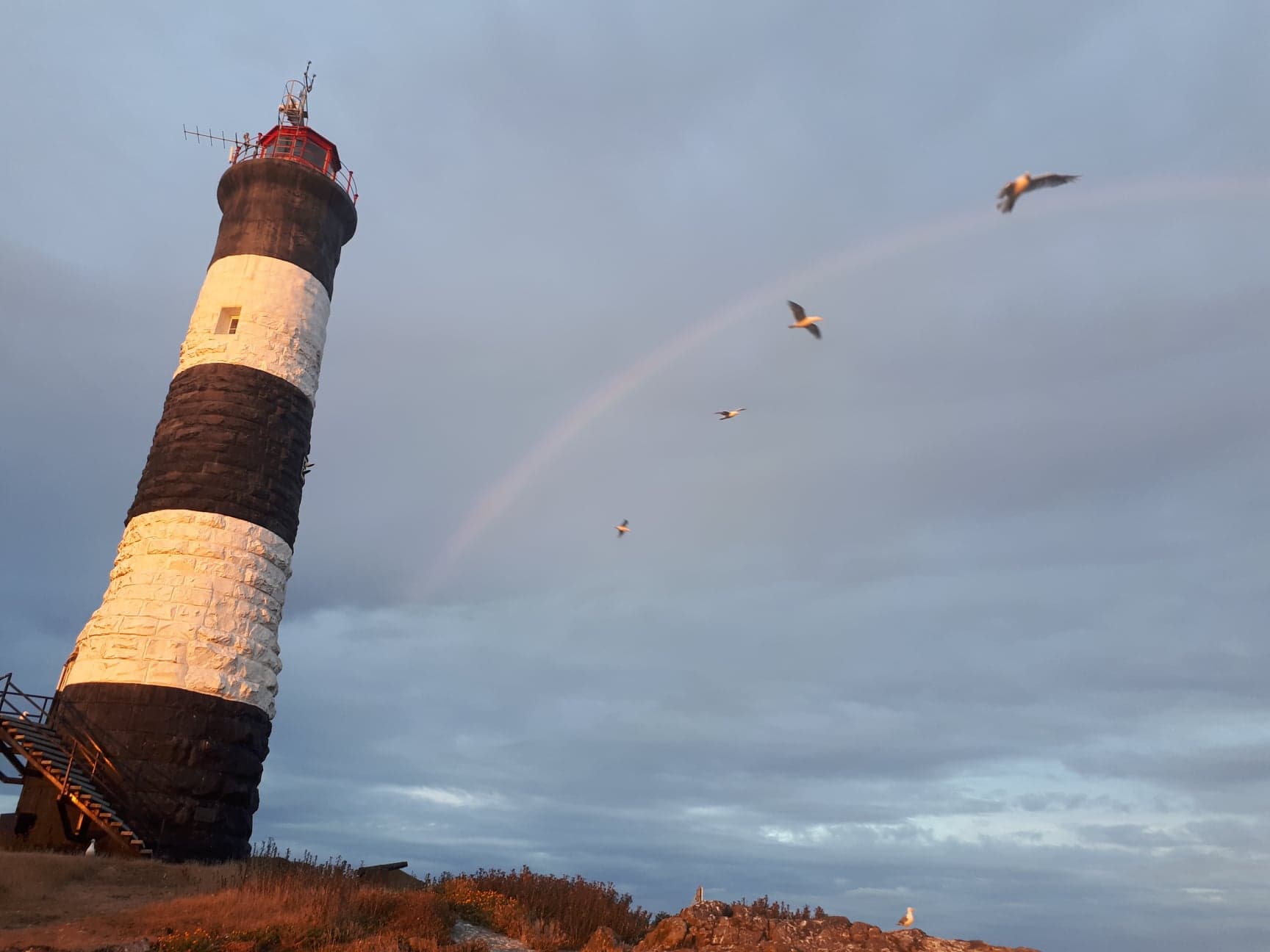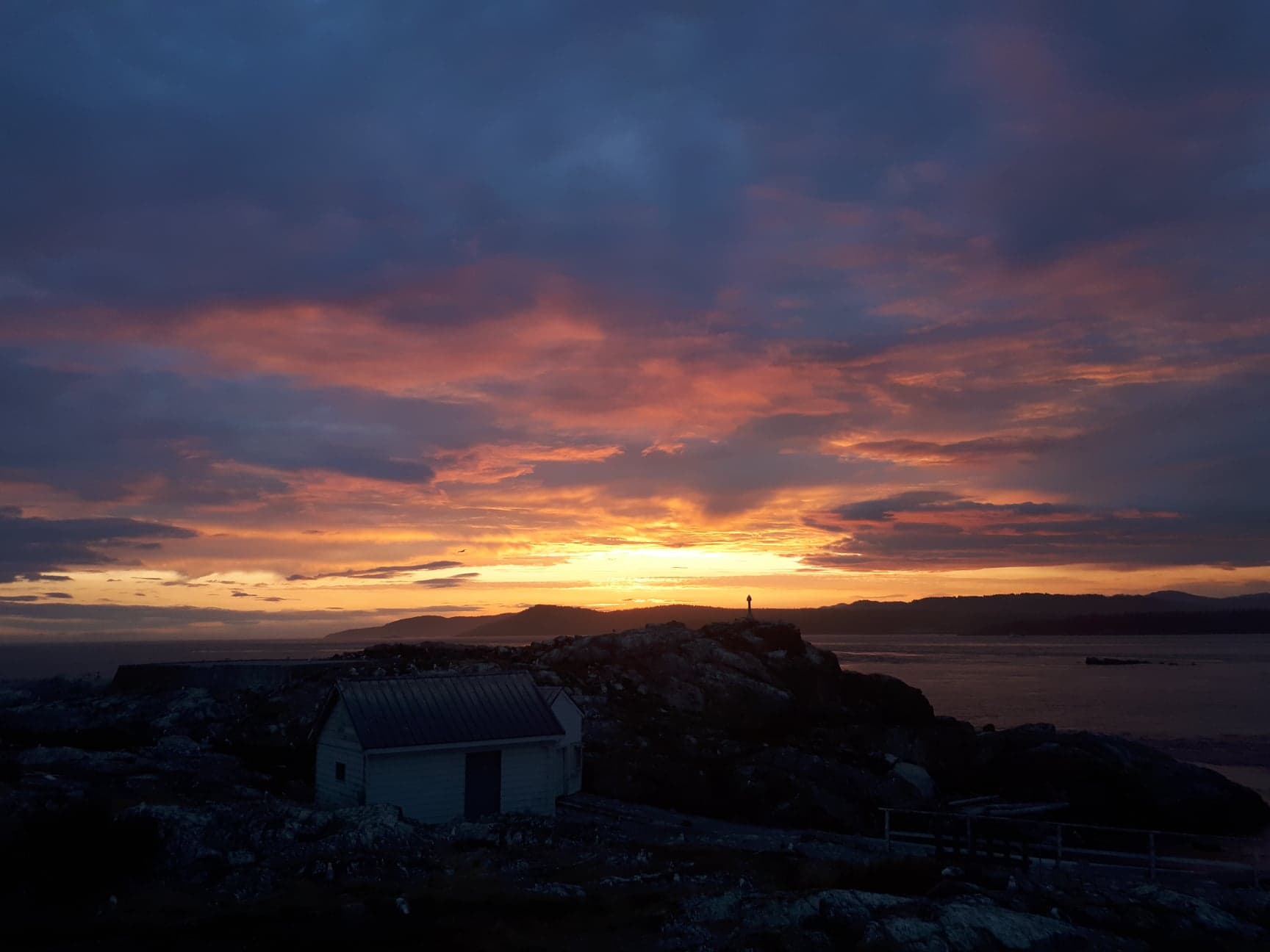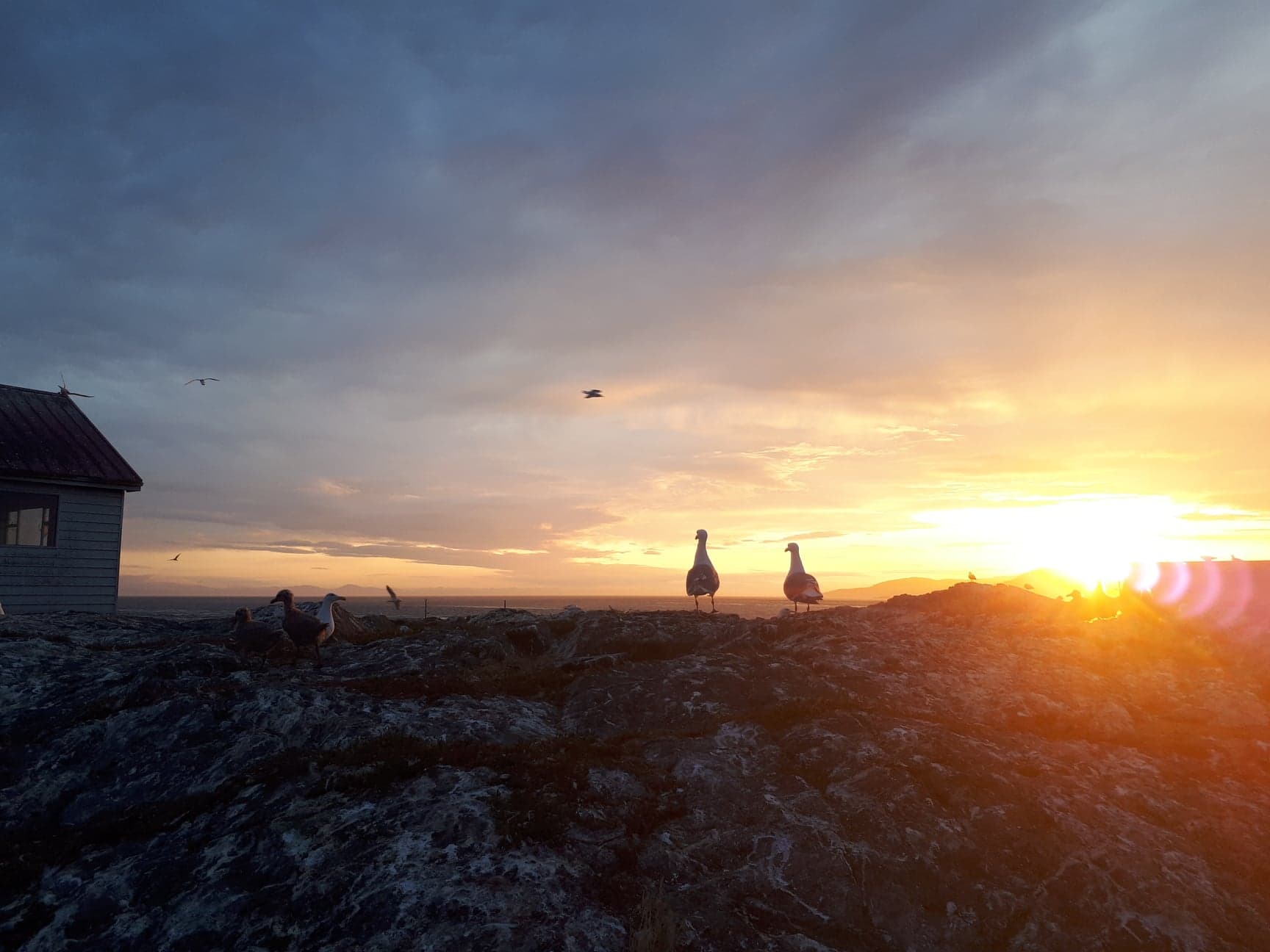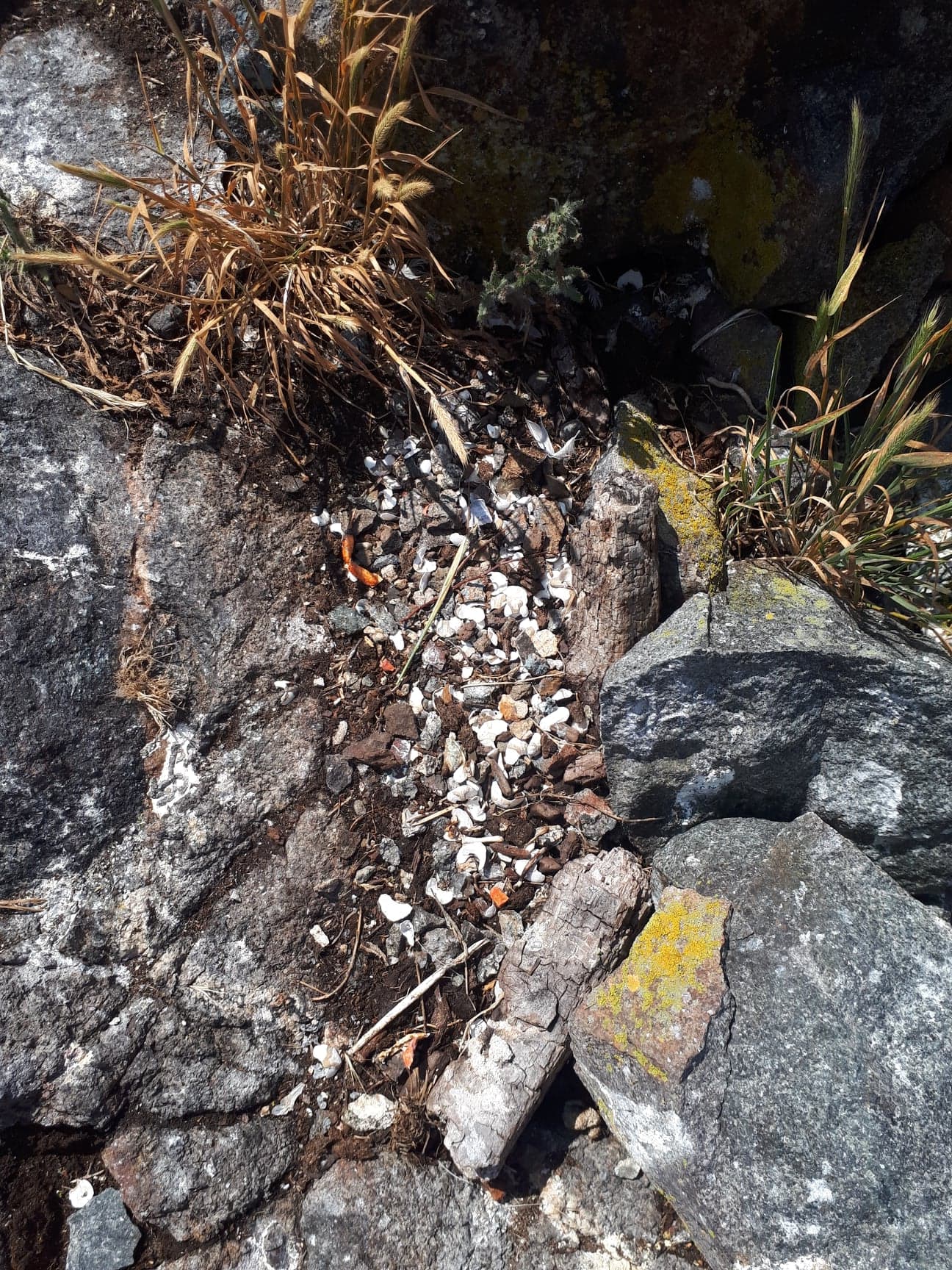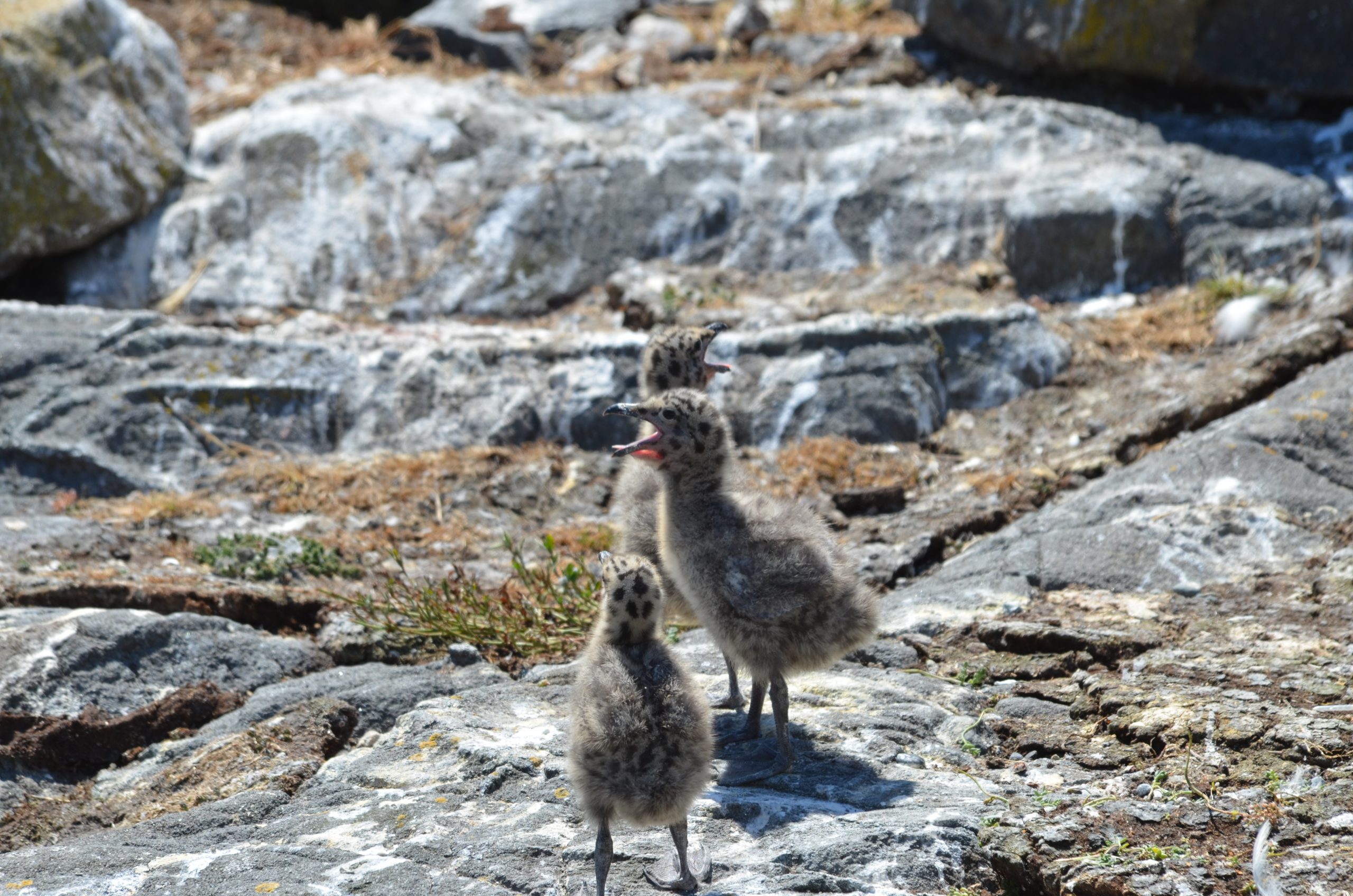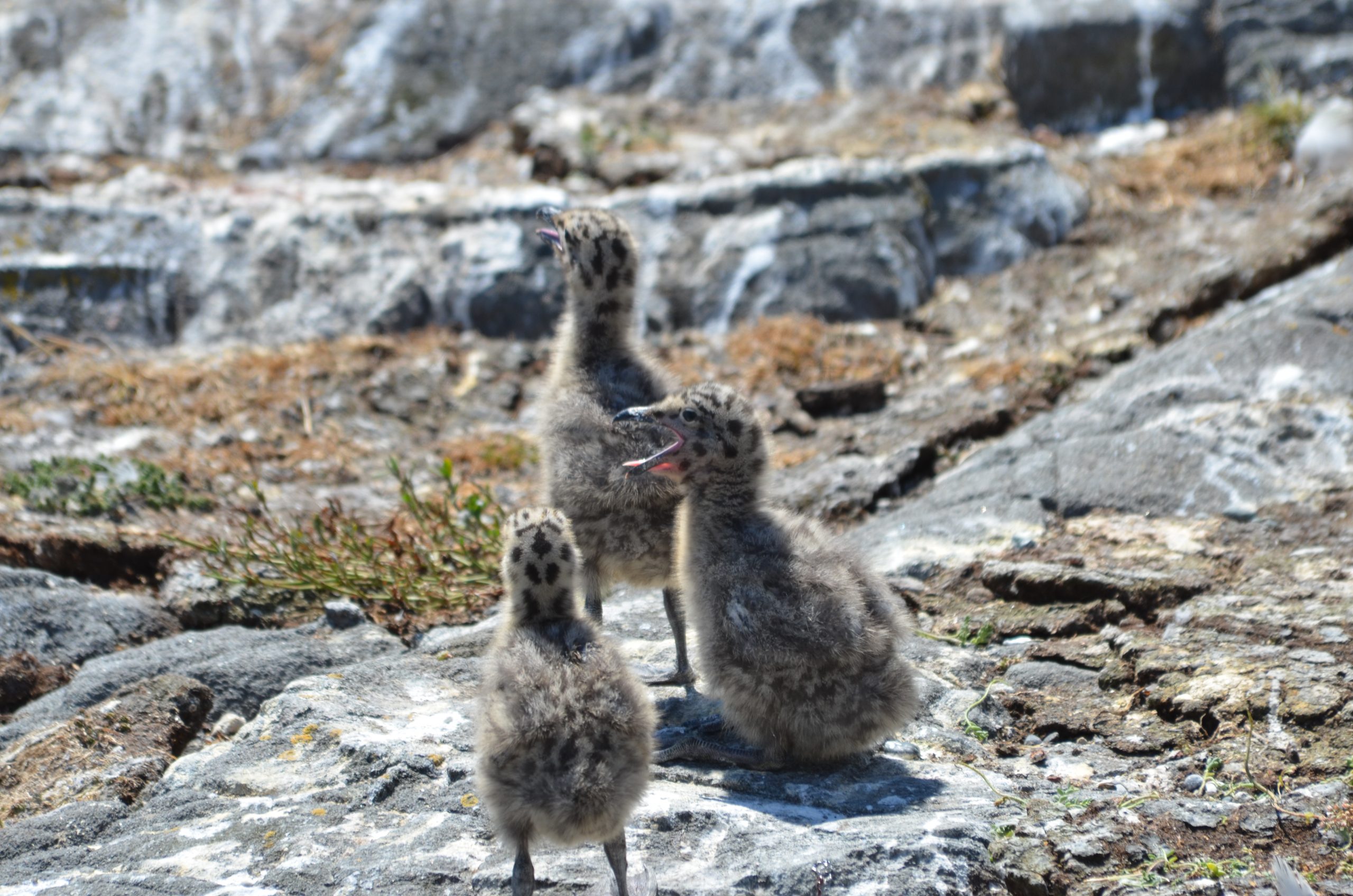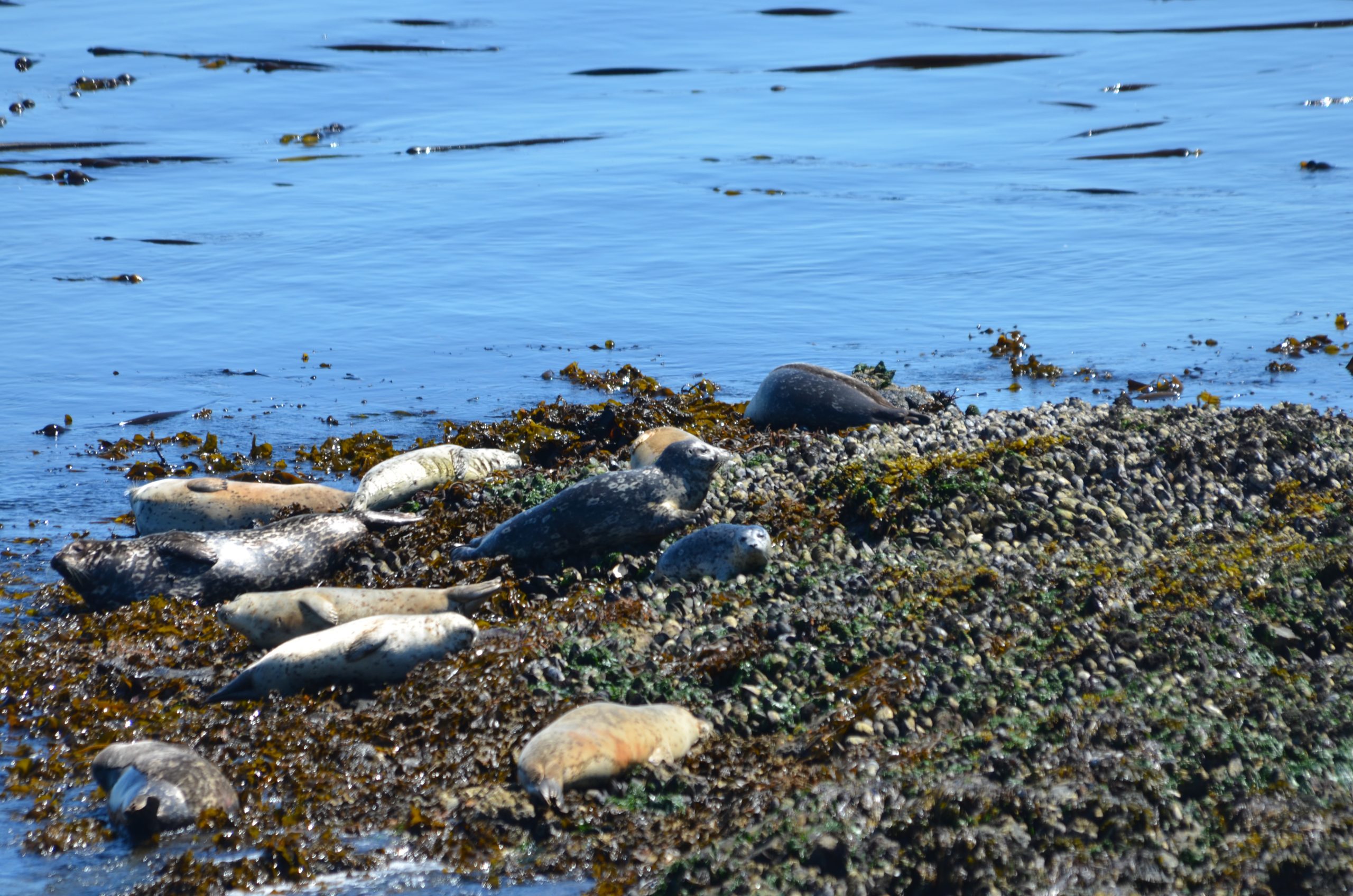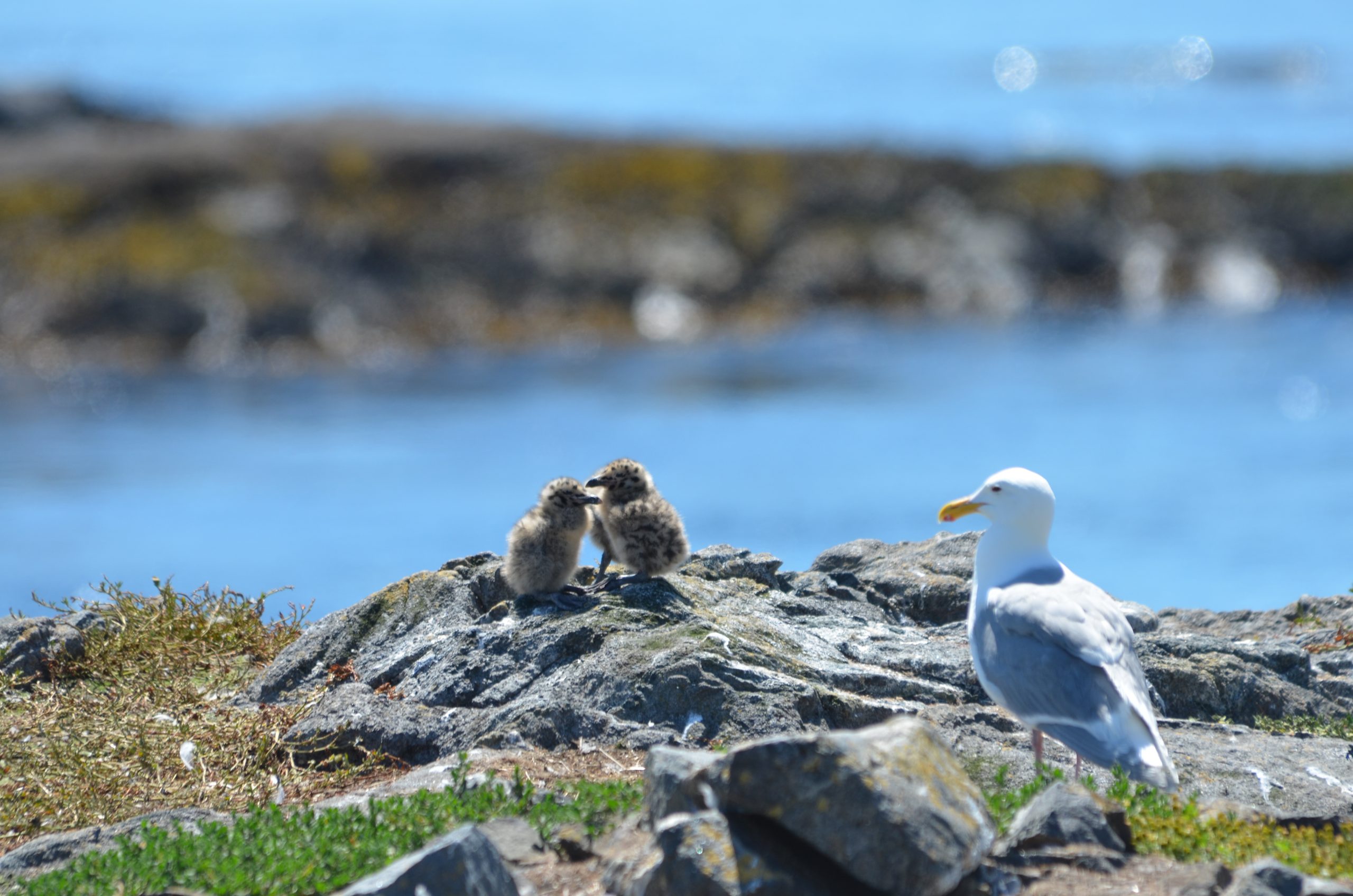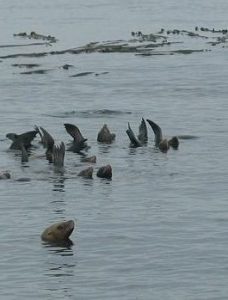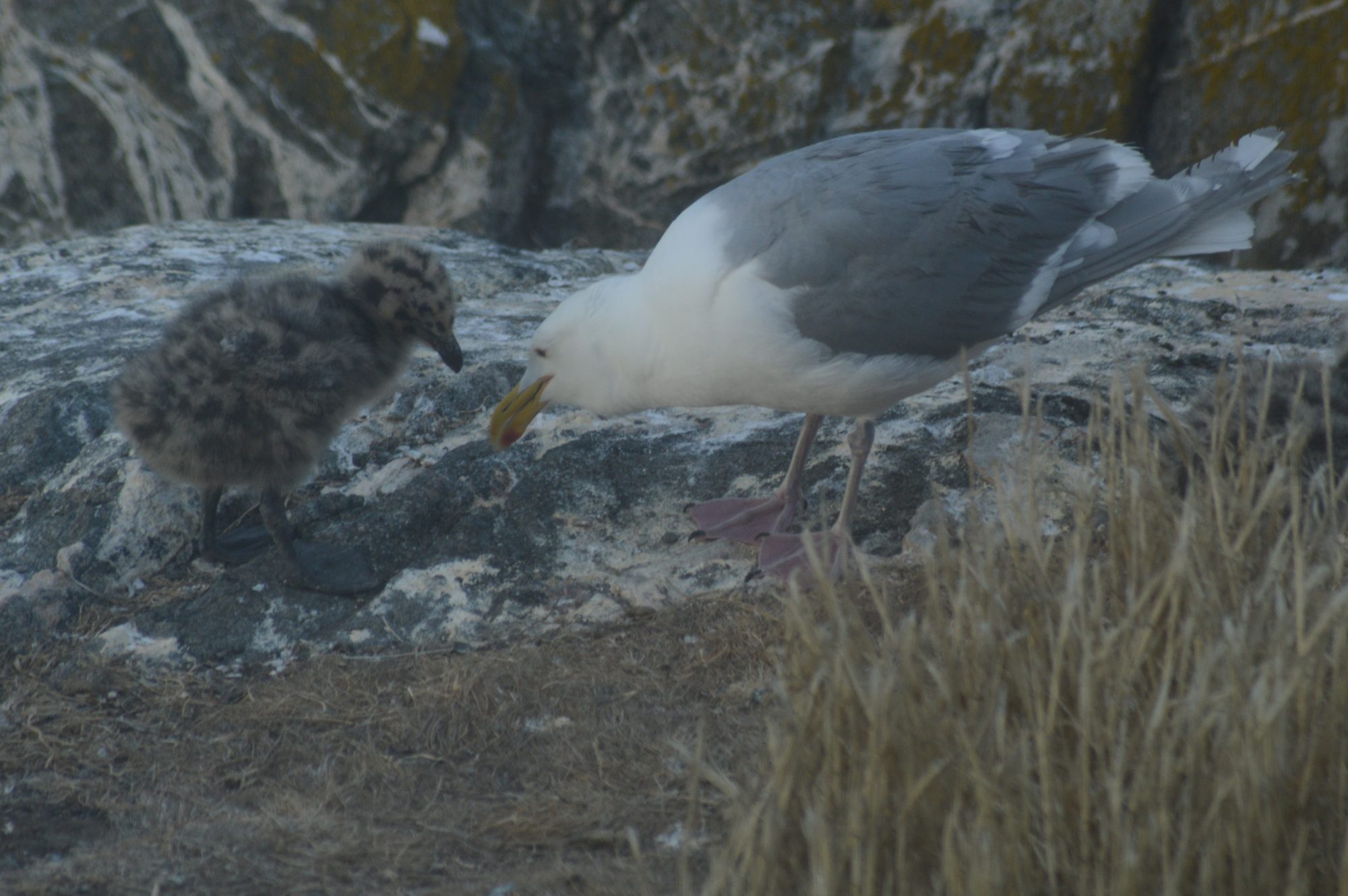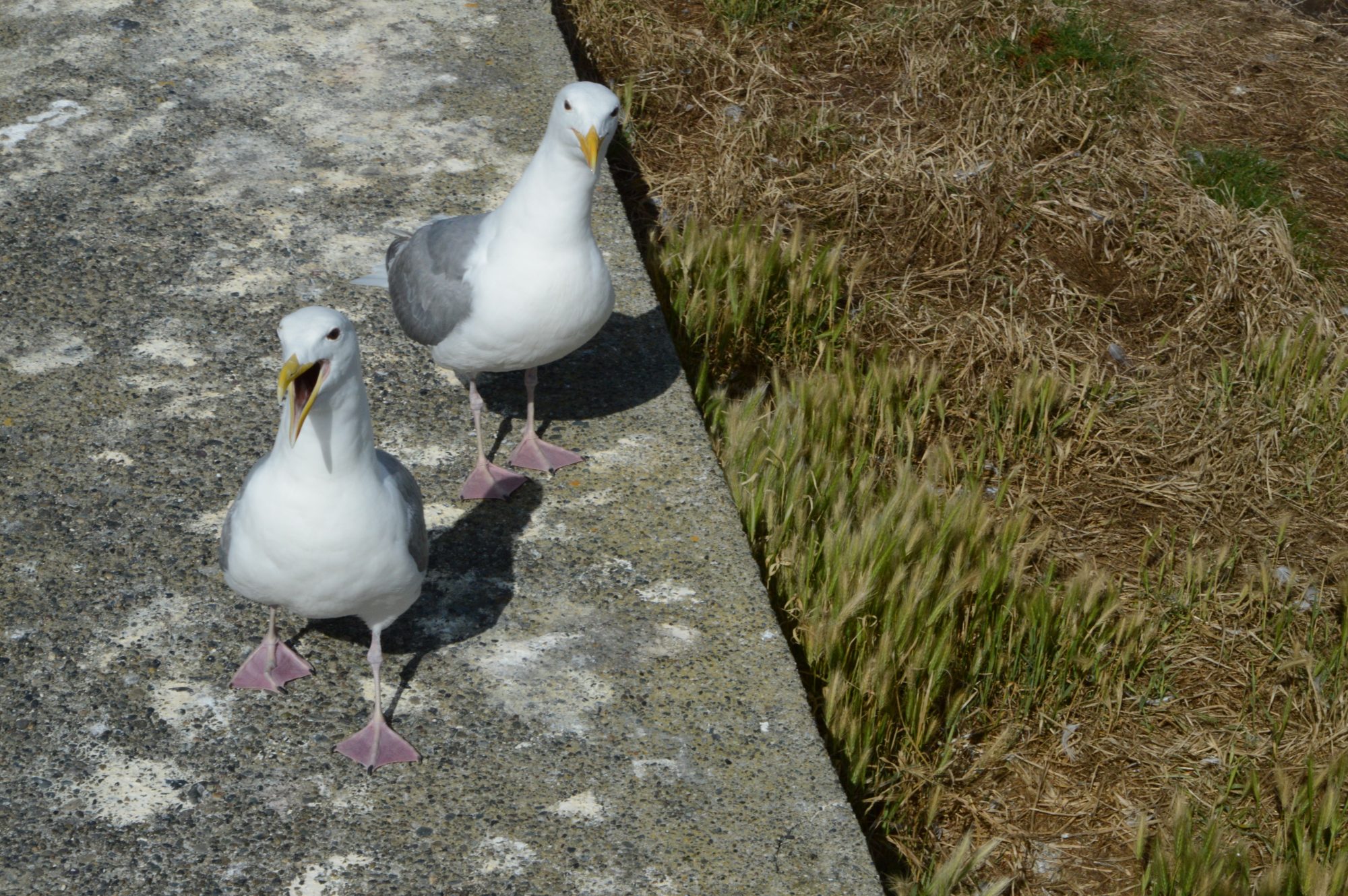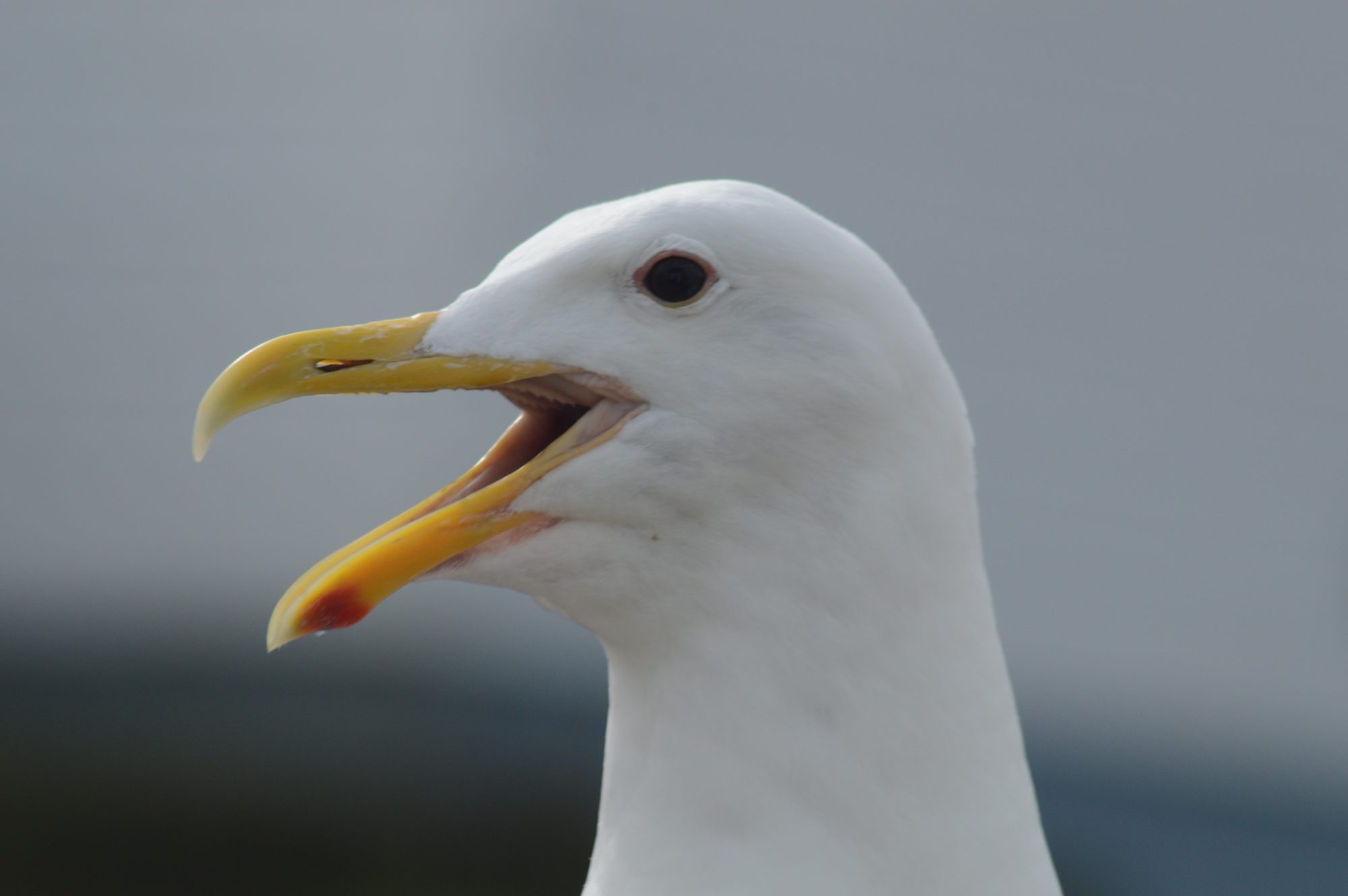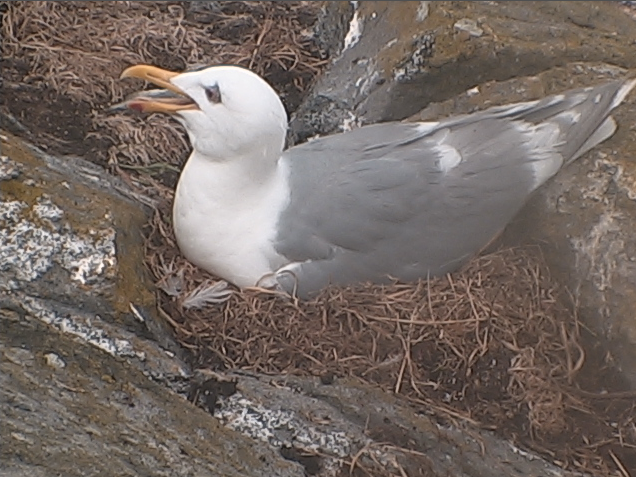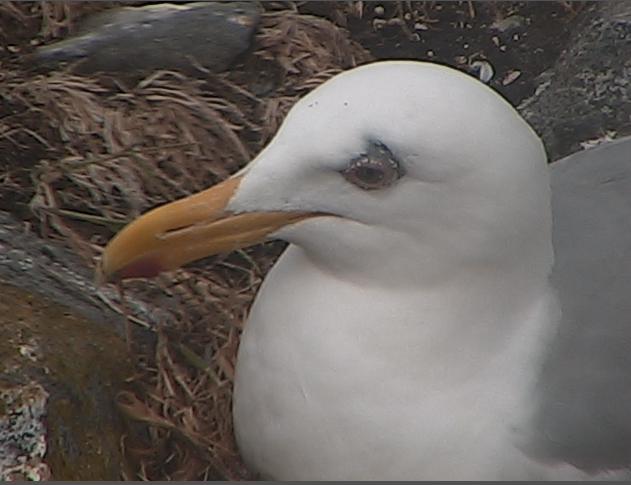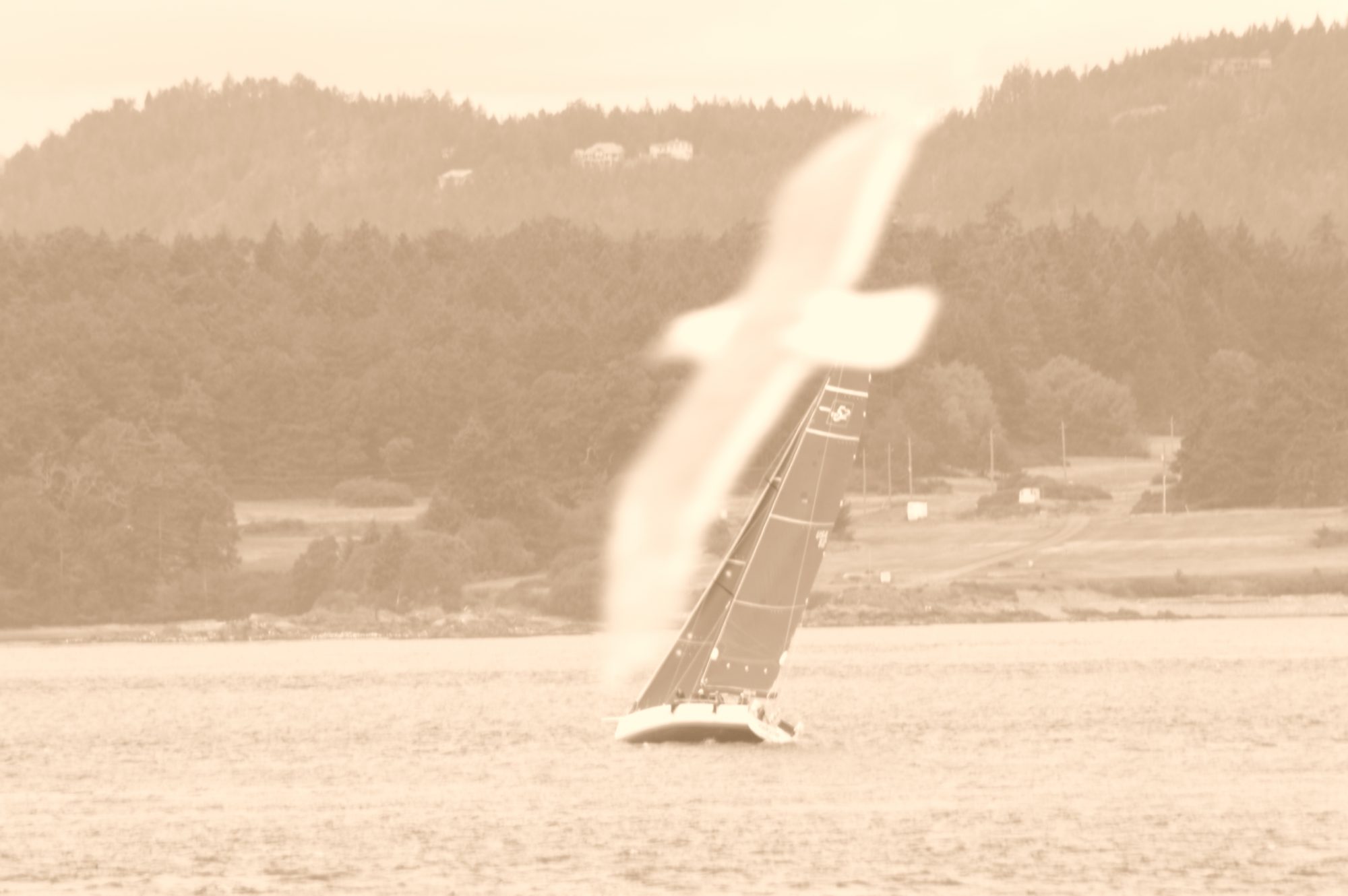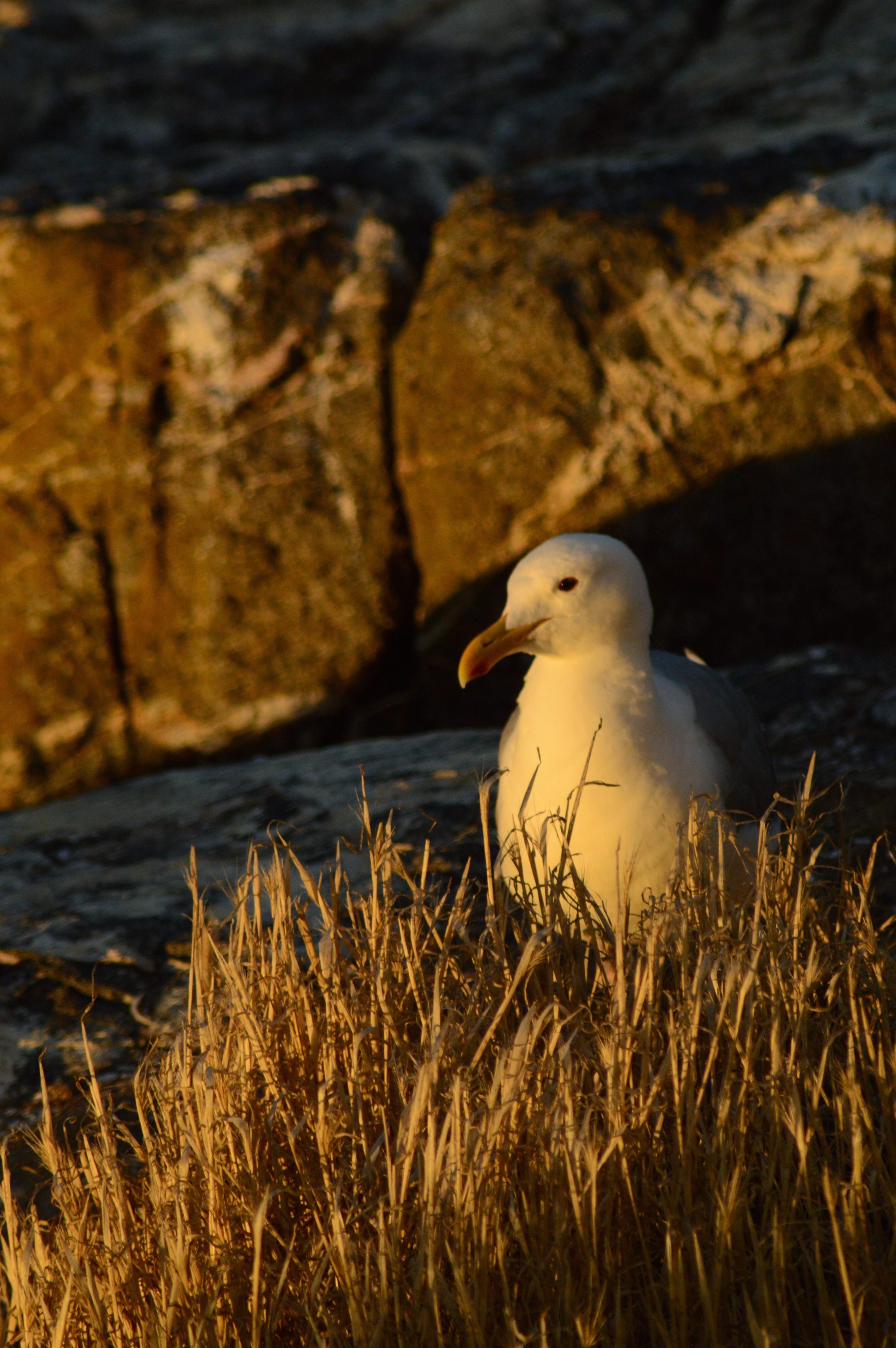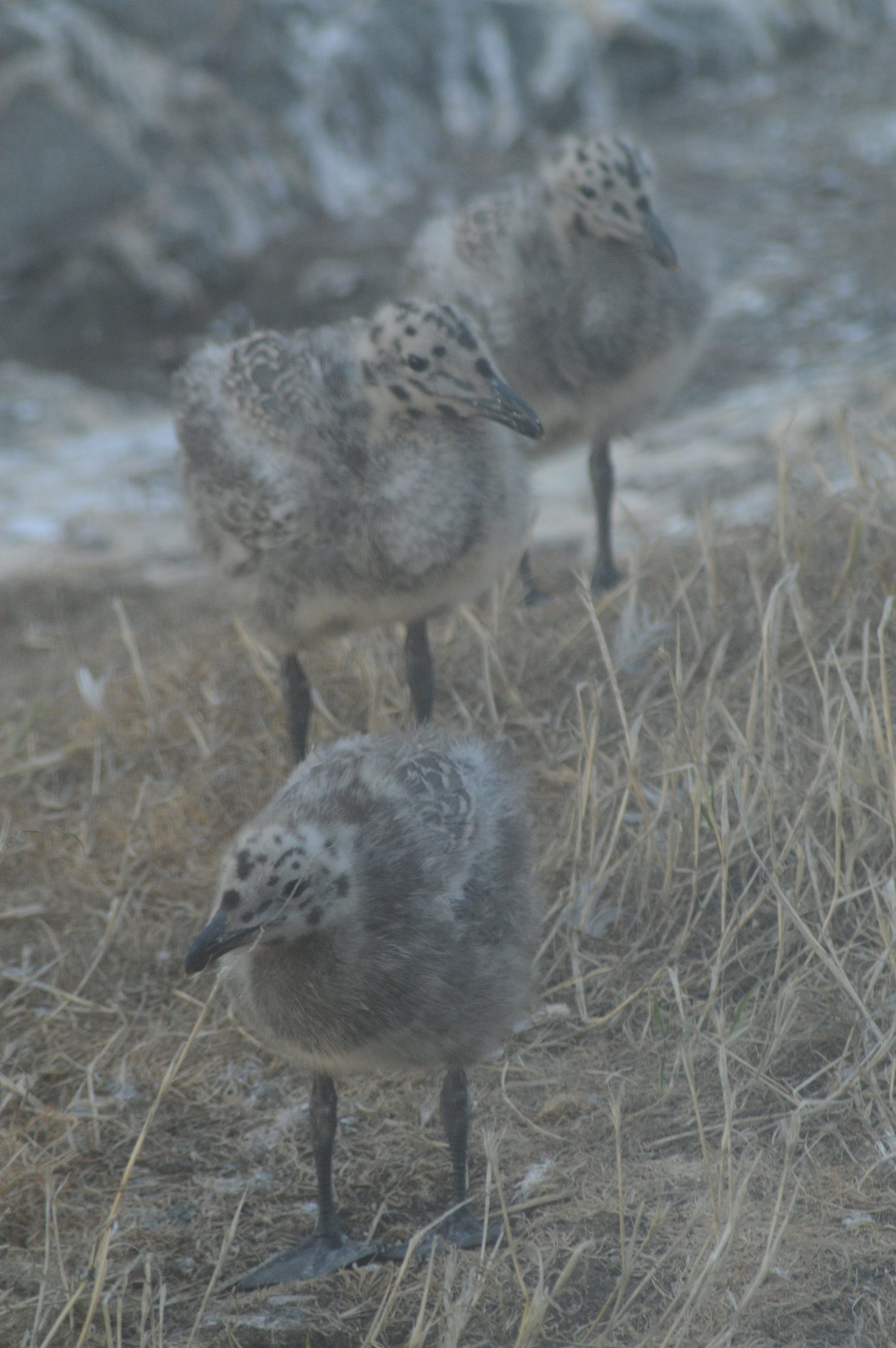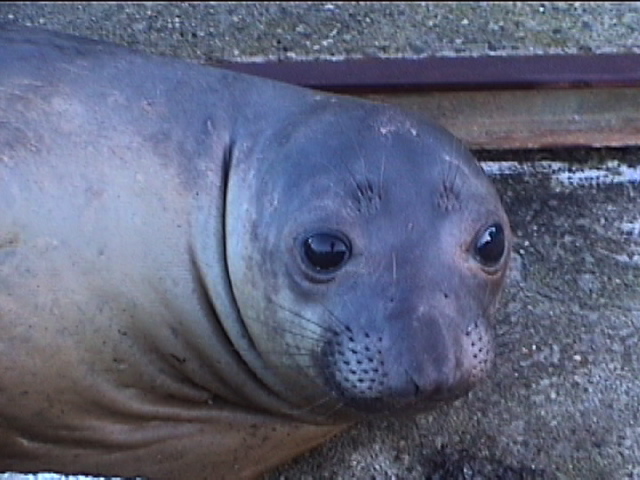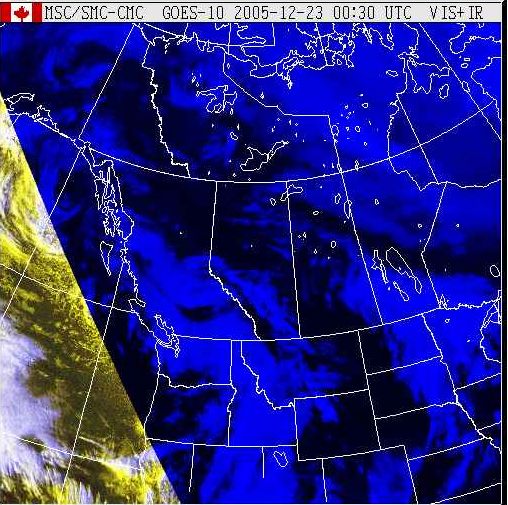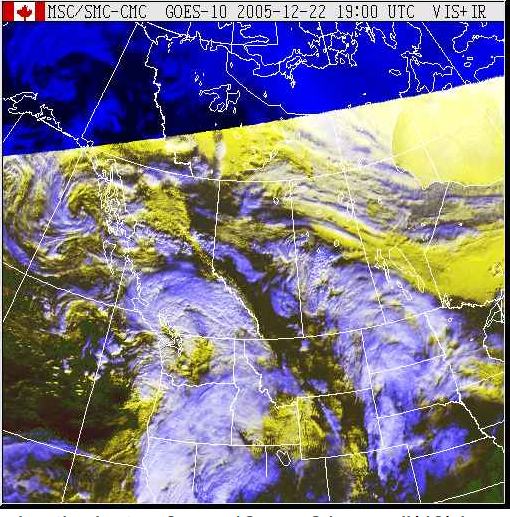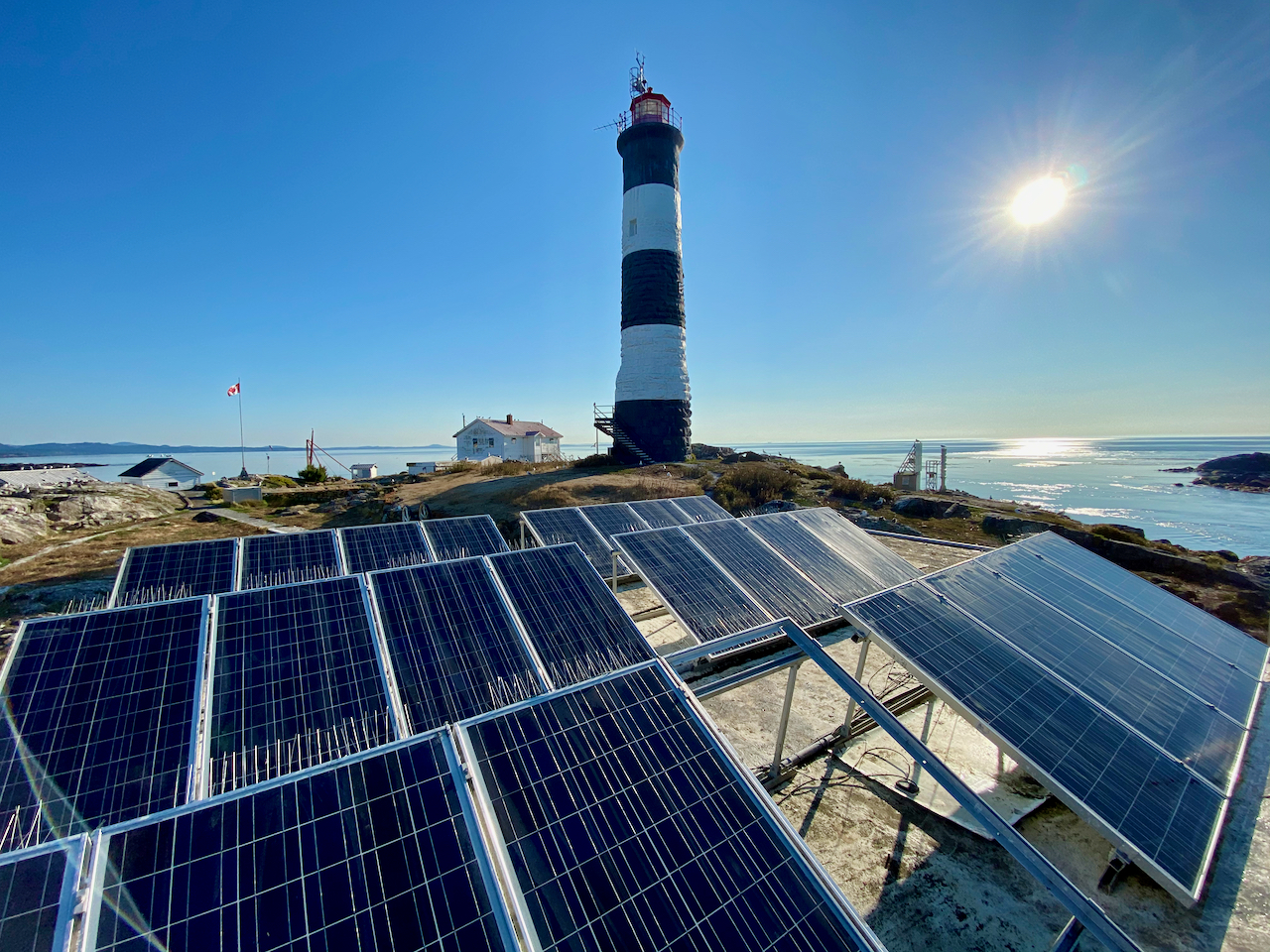Weather:
- Sky: clear and blue
- Visibility 10-15 NM
- Wind 20-25 knots W
- Sea state: .5 m chop
Visitors:
- No island visitors
- A small number of eco-tourism vessels (only one today).
- We were saddened to hear this week that a fishing boat we have often seen pass by, Arctic Fox II, sank in rough seas on Tuesday, claiming 2 lives. An article Here.
Ecological Observations:
- The seagull chicks continue to practice using their wings, hopping and flapping in the wind. It can be quite comical to hear them “peeping” as they did when they were just hatched- they are nearly the size of their parents now!
- The harbour seal pups get cuter by the day. We were lucky to catch one nursing this week from the lighthouse (photo below).
- The sea lions population continues to grow, with a notable increase this week on Main Race Rock. We will need to put the electric fence back soon to prevent them damaging infrastructure.
- We have been enjoying bird watching this week as migrations continue and the pigeon guillemots are raising their young. There have continued to be very large numbers of black turnstones on the E shore.
- This week we have also been visited by a handful of ruddy turnstones, and one whimbrel (thank you Daniel for the ID help!)
- The one male elephant seal is still here. He doesn’t seem to be actively moulting anymore, aside from a tiny bit of remaining skin around his neck. He spent the entire day yesterday drifting and napping in the peaceful and sheltered jetty waters. We have not seen V173 in quite some time.
- We find a lot of joy in watching the elephant seals move from higher ground down the jetty ramp and into the water. If you are not familiar with their undulating movements, this video is an excellent example. It’s a lot of blubber to get off the ground!
- We spotted one sea lion with a fishing flasher hooked onto his face a few days ago. We haven’t seen him since but we are hoping that we will, so a rescue attempt can be made to remove it.
- We also saw a sea lion with what we thought could be an infected brand. We sent a photo to a wildlife officer in Oregon who tracks these branded sea lions and he shared with us that it is likely a shark bite!
- Sea lion with a healing shark bite
- Sea lion with fishing hook and flasher entanglement
- Sea lions napping on the warm rocks
- Harbour seal pup nursing!
- Sea lions on middle rock
- Two seagull chicks quickly growing up!
- Practicing flying is a full time job
- This sea lion seems to have an oozy eye (1)
- (2)
- (3)
- Ruddy turnstones

